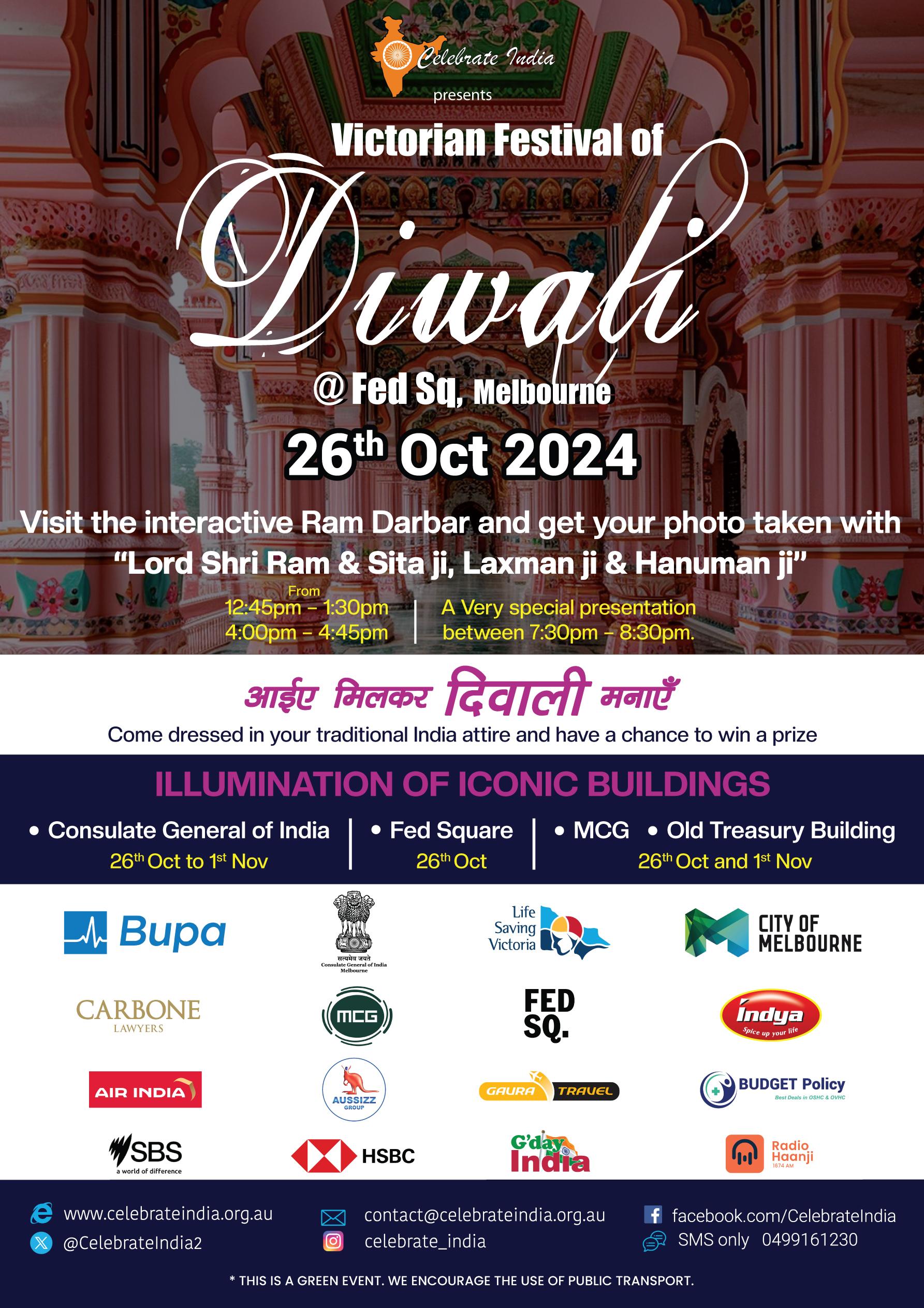








G’DAY INDIA PTY LTD










G’DAY INDIA PTY LTD
MELBOURNE, Oct 3: The Allan Labor Government is backing the Shane Warne Legacy to save lives with free heart health checks during the Boxing Day Test.
CALL: TONEE SETHI
Tel: (03) 9841 6263
Mob: 0412 114 383
Email: info@gdayindia.com.au
Postal Address: PO BOX 1500, Doncaster East, VIC, 3109
Editor in Chief: Tonee Sethi E: editor@gdayindia.com.au
Advertising: Amandeep Sethi E: info@gdayindia.com.au
Contributors:
Anmol Anand, Debasree Das, Dileep Narayan, Dr Raj Kotharu, Gary Nair, Harpal Sandhu, Manjit Sethi, Narisa Dawar, Sanchita Abrol, Karthik Arasu, Abhi Narayan, Gurpal Singh, Monisha Iswaran, P. Harsora, Nandita Chakraborty, Archita Baweja, Barinderjeet Kaur, Gurpal Singh, Muktesh Chibber, Shivani Prabhu, Payel Ghosh
Disclaimer:

Premier Jacinta Allan today announced a grant of $400,000 to the Shane Warne Legacy to deliver additional medical grade machines that can complete free fourminute heart health checks at the Melbourne Cricket Ground during the Test, following the success of the campaign last summer.
Australia’s most renowned cricketer and leg-spin bowler, Shane Warne, suffered a fatal heart attack in 2022, aged 52. The Shane Warne Legacy recognises his impact and honours his life by raising awareness about cardiovascular health.
Heart disease is one of the leading causes of death and impacts one in six people Australia wide. Cardiometabolic disease, such as heart disorders, diabetes, obesity and chronic kidney disease, impacts many Victorians but early detection can help save lives.
Victorians can access preventative heart health checks at their GP, but the Shane Warne Legacy is making it even easier for cricket fans to get a free checkup. Last year, more than 33,000 people

received a free Shane Warne Legacy Heart Health Check, with 7,732 checks completed at the Boxing Day Test cricket match alone –around 1 in every 20 attendees.
The Allan Labor Government opened Australia’s first specialist cardiac hospital, the Victorian Heart Hospital, in March last year.
The hospital’s cardiac emergency department saw 3,303 presentations in its first six months of operation. More than half of these patients were men, with a median age of 65.
(MEDIA RELEASE)
MELBOURNE, Oct 4: Outstanding international students who have made a lasting impact in the Victorian community have been honoured at this year’s Victorian International Education Awards.
Acting Minister for Economic Growth Danny Pearson today congratulated the seven winners of the prestigious awards who were recognised for their exceptional achievements and contributions.
The awards celebrate the significant value international students bring to Victoria, including to the state’s multicultural community, critical research areas, local talent pool and economy.
This year featured student applicants across 54 different nationalities, showcasing the diversity of Victoria’s education sector and how international students enhance the state’s connection with communities across the world.
The Premier’s Award for International Student of the Year was awarded to Lara Salaysay, an environment and sustainability student at Monash University.
Lara is a climate change advocate, contributing to the Victorian Energy Jobs plan and international climate forums. She is also a cultural leader in her community, serving as Vice President for the Filipino-
Australian Student Council of Victoria.
Victoria’s diversity was strengthened by more than 235,000 international students from around 175 countries in 2023. International students generated $14.8 billion for the state’s economy last year, supporting more than 63,000 local jobs.
Melbourne retained the title of Australia’s best student city this year by global higher education ranking specialist Quacquarelli Symonds.
The Allan Labor Government is ensuring Victoria continues to be Australia’s number one destination for students with the $5 million Yes to International Students Fund, supporting the state’s universities and TAFEs to take their education offerings to the world.
The Labor Government is also ensuring international student graduates have every opportunity to live and work in regional Victoria through the Skilled Work Regional visa in 2024-25. This initiative will enhance career pathways for graduates and help meet workforce demands in regional Victoria.
To see all award winners and finalists, visit studymelbourne.vic.gov.au.

MELBOURNE, Oct 2: The Allan Labor Government is securing access to critical raw materials to meet growing demand for the new housing, infrastructure and renewable energy projects that Victoria needs.
Victorians can now have their say on new planning controls that will protect sand resources near Lang Lang and Trafalgar in the state’s south east and an existing stone quarry near Oaklands Junction in
Melbourne’s north.
The Labor Government is proposing to designate new Strategic Extractive Resource Areas, to protect the significant quarry resources from other development – ensuring the construction sector can continue to access to the sand, rock and gravel it needs to build new homes and infrastructure.
They also consider local environmental and cultural heritage values, existing land
uses and access to transport networks when identifying these areas, to ensure any potential land use conflicts can be avoided. This gives both communities and industry impotent clarity about where resources may be developed in the future.
By 2051, Victoria is expected to be home to more than 10 million people, increasing the need for affordable housing, schools, roads and rail, hospitals, and other critical infrastructure.
New quarry supplies need to be brought online in appropriate areas ensures we can continue to provide the materials we need for a growing Victoria.
Quarry production in Victoria is growing year-on-year with a 14 per cent increase over three years, reaching an annual production record of 73.6 million tonnes of rock, sand and gravel.
Victoria’s extractive resources industry is a vital part of the state’s economy, representing around $1.3 billion annually at the quarry gate.
To make a submission visit, engage. vic.gov.au/sera-langlang-oaklandsjunctiontrafalgar.

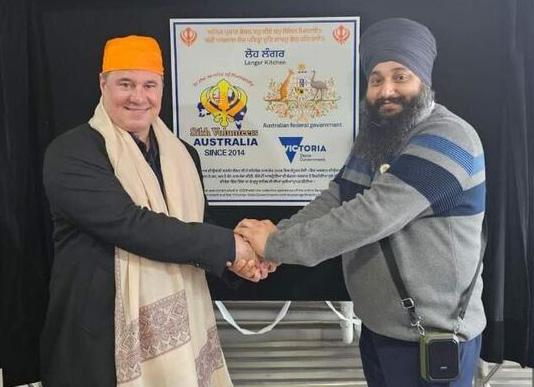
MELBOURNE, Sep 29: The Allan Labor Government is supporting individuals and families in need with a new kitchen facility and three new vehicles for not-for-profit
organisation Sikh Volunteers Australia. Member for Hastings Paul Mercurio, representing Minister for Carers and Volunteers Ros Spence, attended the
opening of the kitchen facility and unveiling of the vehicles at the premises of Sikh Volunteers Australia in Langwarrin.
Sikh Volunteers Australia is a volunteerrun organisation that provides free food for Victorians in need and supports communities in Victoria and nearby regions in times of crisis such as bushfires or floods.
In 2023 Sikh Volunteers Australia distributed more than 28,000 free meals from their vans, and they also provide free food, water and necessary items to a range of communities during disaster relief operations.
The Labor Government invested $500,000 to fund the purchase of two new vans, as well as the purchase and fit out of a brand-new food truck which Sikh Volunteers Australia will use to deliver food relief and community outreach to Victorians during disasters.
The Labor Government also contributed $250,000 for a new kitchen at Sikh Volunteers Australia’s base in Langwarrin, alongside an investment of $700,000 from the Albanese Labor Government.
The upgrades ensure Sikh Volunteers Australia is better equipped to swiftly respond during periods of crisis such as bushfires or floods.
(MEDIA RELEASE)
NEW DELHI, Sep 18: In an Australian first, the Allan Labor Government team up with the Pro Kabaddi League of India to explore bringing a PKL showcase to Melbourne.
Premier Jacinta Allan joined Head of Sports at Disney Star Sanjog Gupta and League Commissioner of PKL Anupam Goswami in India to announce they will work together to bring an event to Melbourne in the next 18 months.
Kabaddi – the second most actively followed sport in India behind cricket – is a fast-paced, high-intensity contact sport, featuring two teams of seven battling for points by ‘raiding’ the opponent’s side of the field. The challenge lies in tagging as many defenders as possible within a 30-second raid. Played over 40 minutes, Kabaddi demands agility, strategy, and teamwork, making it one of the most thrilling sports to watch.
The Pro Kabaddi League launched in India in 2014 and has become one of the biggest sports in the country – with nearly 300 million viewers in India alone. Now in its 11th season, PKL continues to break new ground and is one of India's premier
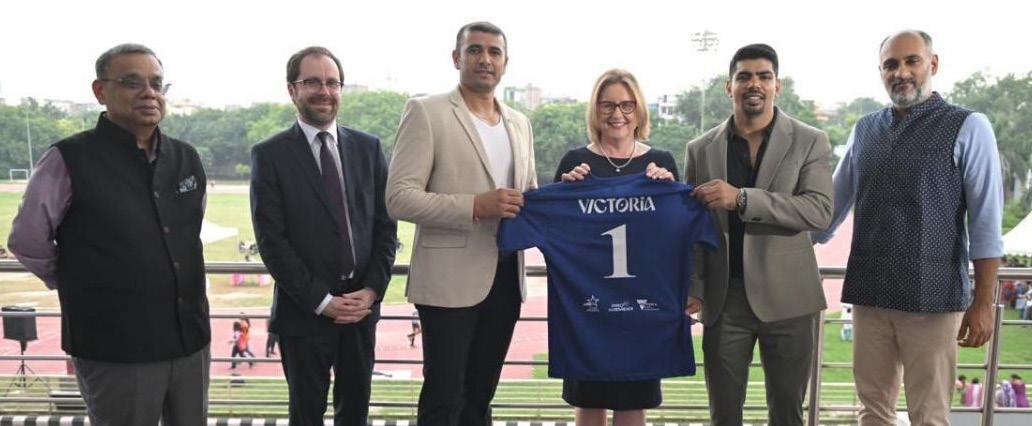
homegrown sports leagues.
With Victoria being home to the largest Indian population in Australia, this news will be welcomed by local and international Kabaddi fans.
India is the state’s third biggest overseas market for visitor expenditure and, in the year ending March 2024, Victoria welcomed almost 180,000 Indian visitors, generating $452 million for the state.
The Labor Government is continuing to build on the state’s jam-packed major
events calendar including the Melbourne Cup Carnival, Yayoi Kusama exhibition at the NGV, Boxing Day Test featuring Australia v India, Beetlejuice The Musical, British & Irish Lions at the MCG, the 2025 Australian Open and Formula 1 Grand Prix.
The inclusion of an PKL All Stars Showcase will not only enhance Victoria’s reputation as a global sports destination but also foster deeper cultural connections.
NEW DELHI, Sep 16: Victoria will continue to be Australia’s number one destination for students, as the Allan Labor Government launches a fund to help more Victorian universities and TAFEs take their education offering to the world.
In Delhi today – following the announcement of an expanded partnership between RMIT University and leading Indian university BITS Pilani –Premier Jacinta Allan announced a new $5 million Yes to International Students Fund to help bring more partnerships like RMIT-BITS to life.
The new fund will focus on transnational education – offering targeted seed funding to Victorian universities and TAFEs so they can kick start and grow partnerships to deliver more education overseas.
Transnational education (TNE) is the delivery of Australian courses to international students outside Australia, where a university may set up a campus offshore or co-deliver dual courses with a reputable international university.
Delivering Victoria’s world-class
education overseas brings huge benefits back to the state: growing the economy, strengthening the global reputation of Victoria’s institutions, and giving staff and students in each country mobility and more opportunities for research, career development and further study.
Some Victorian public institutions with a smaller global footprint will benefit from more support to find reputable partners and explore valuable opportunities across the globe.
TNE students are currently proposed to be exempt under Australia’s National Planning Level reforms. Today, the Premier also called on the Federal Government to guarantee TNE students won’t be counted towards the cap.
Victoria is Australia’s leader in transnational education, supported by the largest offshore education network of any state.
The RMIT and BITS partnership is one of Australia’s TNE success stories and is the first Australian–Indian dual degree program where students complete half their undergraduate degree in India and half in Victoria.
TAFEs are a success story, too. Holmesglen operates a TAFE campus in Mongolia and has trained more than 1,000 mine workers, and in 2015, it opened a girls’ senior secondary school in Qatar specialising in business.
Victoria will work with universities and training providers on the design of the fund and confirm further details in the Economic Growth Statement later this year.
International students support Victoria’s economy, generating $14.8 billion in revenue last year and supporting more than 63,000 FTE jobs across the state.
The Premier met Guru Sri Sri Ravi Shankar at the largest Indian Exhibition in New Delhi and said her top three priorities are education, education and education. She shared how she is on a 200-day morning yoga streak at the Women’s Leadership Forum.
The Premier wore a sari made by an Indian designer. She said her dream is to be the first Victorian premier in a Bollywood film, speaking at the My Melbourne premiere.


Dynamic Indo-Australian artist Siyer is making waves in the global music scene. As the only Indo-Australian GRAMMY® voting member to be on the GRAMMY® Award voting ballot for three consecutive years (2022, 2023, and 2024), he stands out as a unique voice in the international music community. This prestigious recognition highlights not only his talent but also his consistency in producing music of the highest calibre, blending his multicultural influences to create something truly distinctive.
Siyer’s 24-year music career is marked by notable performances that showcase his strong ties to both his Indian heritage and his Australian roots. In 2010, he was invited to perform the Indian National Anthem at the Parliament of Victoria, a significant moment
that emphasized his deep connection to his culture.
More recently, he has delivered stirring renditions of the anthem at major events, such as the Australia India Chamber of Commerce Diwali celebration at the iconic Melbourne Cricket Ground (MCG) and their national Conference Gala dinner in Perth in 2023. His rendition of the Indian National Anthem at the Indian Film Festival Melbourne at Federation Square further solidifies his standing as a cultural ambassador, seamlessly bridging two worlds through music.
Siyer’s live performance experience is equally impressive, having graced the stage in over 600 concerts alongside legendary artists such as Shankar Mahadevan, Udit
Narayan, and Sadhna Sargam. His live performances have not only showcased his vocal prowess but also cemented his place as a seasoned artist.
Siyer has headlined shows at iconic venues such as the Melbourne Cricket Ground (MCG) and the Sydney Cricket Ground (SCG) during India’s ODI series tour of Australia in 2016, a testament to his ability to command large audiences. His performances during India’s tours in 2014 and on the Main Stage for the Boxing Day Test match in 2018 at the MCG further highlight his versatility and growing prominence in international circles.
In addition to his live achievements, Siyer’s creative abilities shine through his three studio albums (Is Dhundh Mein (2007), The Saffron Groove Project (2022), Yours Truly Siyer (2023)), for which he not only performed as the singer but also took on the roles of composer and lyricist. He also collaborated with international singersongwriter Bobby Beebob. This triplethreat talent continues to push boundaries, making his music both deeply personal and universally appealing.
Siyer’s journey is one of passion, dedication, and a desire to break barriers. His achievements not only elevate his own career but also shine a spotlight on the increasing recognition of Indian-Australian talent in the global arena. With each new milestone, Siyer continues to inspire, creating music that transcends borders and speaks to the universal power of art.
MELBOURNE, Oct 4: E-scooters can now operate permanently in councils where agreements are in place with share hire operators with the Allan Labor Government’s two-year trial finishing today.
Minister for Public and Active Transport Gabrielle Williams today announced a new advertising campaign in partnership with TAC to promote safe riding and reinforce the tough new penalties that come into effect today.
Fines are increasing for riding without a helmet to $395, riding on a footpath to $296 and carrying a passenger to $247.
E-scooter passengers will also face a new fine of at least $247, and this sum will increase to $642 if they are also not wearing a helmet.
Riders caught riding under the influence of
drugs or alcohol are subject to the same rules as motorists and will also have their vehicle license automatically suspended and have an interlock fitted to their vehicle for at least six months.
The main road rules will remain unchanged, with riders needing to be at least 16 years old, not travel at more than 20 kilometres per hour and only ride on roads with a maximum speed limit of 60 kilometres per hour or less.
Share hire e-scooters are only legal in council areas that have an agreement with an operator – while private scooters can still be used across Victoria.
E-scooters have proven popular option for thousands of Victorians to travel home safely – and the advertising campaign will improve
awareness of the law and consequences of unsafe riding.
The Department of Transport and Planning will continue to work closely with councils and e-scooter hire operators to introduce additional safeguards for share e-scooter schemes to further improve safety for riders and pedestrians.
Next year, new laws will set minimum standards for share-hire e-scooter companies. These companies will need to be prequalified to operate in Victoria, including installing new safety technology on their e-scooters
To learn more about the e-scooter rules, visit transport.vic.gov.au/Road-rules-andsafety/E-scooter-road-rules.
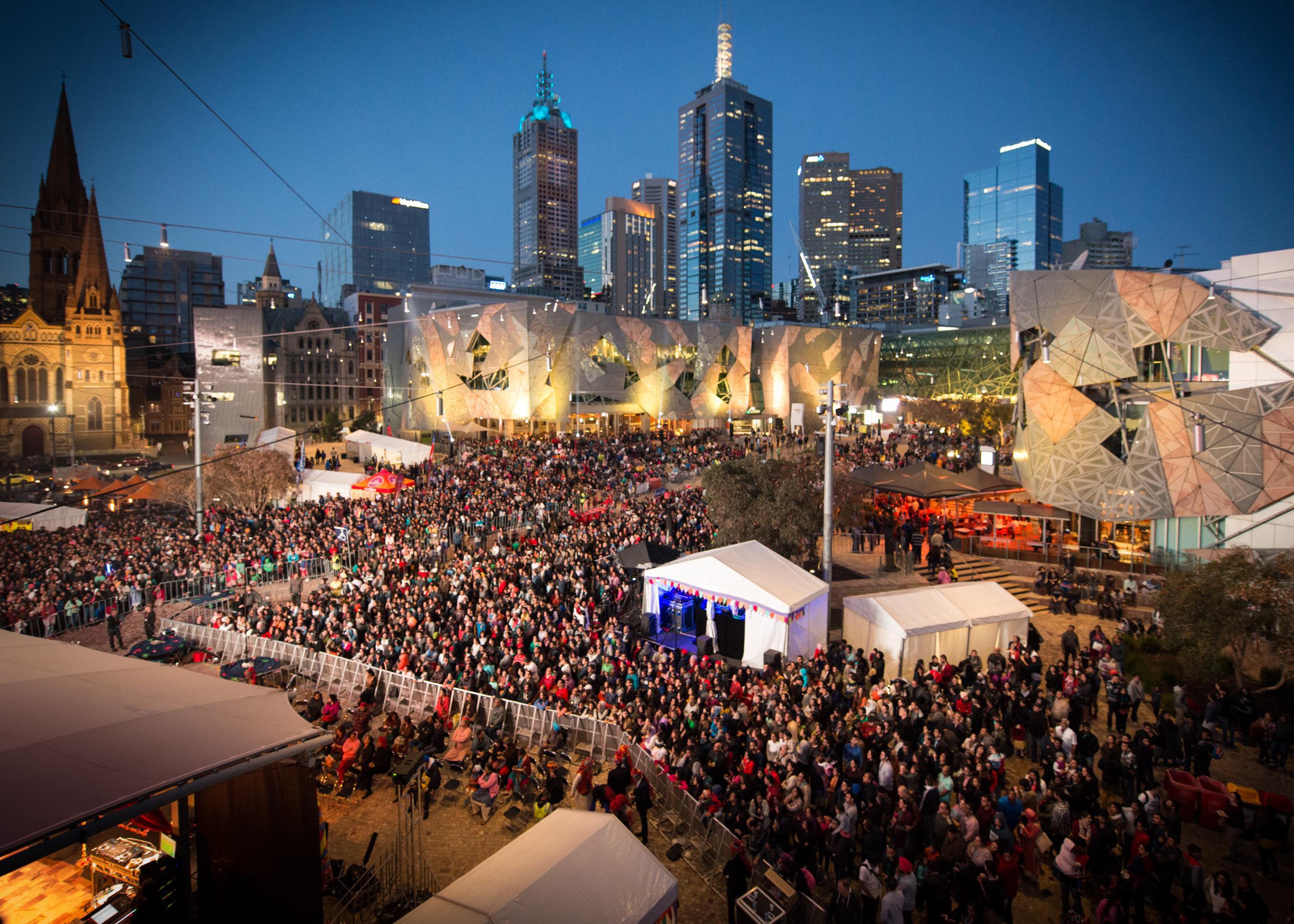
On October 26th, Fed Square will transform into a celestial realm for the 19th annual Diwali extravaganza.
Founded in 2005, Celebrate India Inc. aims to share India's rich cultural heritage with the wider community through the magical festival of Diwali, holding its first celebration in 2006.
The Diwali festivities at Fed Square have become a staple in Victoria's cultural calendar, renowned for their grandeur and authenticity. This year, two exciting Facebook competitions for the younger generation are underway. The "Dance for Diwali," sponsored by Air India, has concluded, while "BUPA's Show Your Culture" invites participants to dress in traditional attire and share Diwali greetings in their regional language for a chance to win fantastic prizes.
On the day of the event, Fed Square will come alive with Indian colors, celebrating Melbourne's biggest Diwali festival. Attendees can immerse themselves in traditional and contemporary Indian culture, featuring soul-stirring Kirtan, drum beats, breathtaking Bollywood and folk-dance performances, yoga, meditation, circus acts, and children's crafts. The bustling bazaar will offer jewellery, handicrafts, and Diwali gifts, alongside a variety of famous Indian street foods along the Riverside.
Don't miss the special presentation depicting the Birth of Diwali, along with the Interactive Ram Darbar, where guests can meet Lord Ram, Sita ji, Lakshman ji, and Hanuman ji for unforgettable memories. A special guest,
a Para-Olympic champion swimmer courtesy of BUPA, will also be present, sharing safety tips for the upcoming summer.
Join the festivities, renowned for spectacular fireworks, multicultural performances, and hundreds of glittering lamps to illuminate the night. Iconic buildings, including the Old Treasury, MCG, Indian Consulate, and Fed Square, will light up on this day and again on November 1st.
The Celebrate India Team eagerly anticipates welcoming everyone to Fed Square, Melbourne, on October 26th from 11 AM to 10 PM. This family-friendly event offers free entry for all.
For more information, visit: www. celebrateindia.org.au

MELBOURNE, Oct 8: Former national security officials warned on Tuesday that Australia is unprepared for the cascading and existential impacts of climate change.
The Melbourne-based Australian Security Leaders Climate Group, a coalition of former national security officials, said in a report
that the Australian federal government must radically overhaul how it prepares for climate threats.
The report warned that climate change is certain to cause natural disasters to increase in frequency and intensity, which are likely to overwhelm the government's ability to help
communities survive and recover.
"Today, unimaginable new climate extremes confront us: record-breaking droughts and floods, cruel heatwaves, unstoppable bushfires, broken infrastructure, and coastal inundation. Worse is to come," the report said.
"Responding adequately to the climate threat is fundamental to the survival of the nation."
The group made 13 recommendations to increase action on climate change and ensure Australia is better prepared.
It called on the government to make faster cuts to Australia's carbon emissions, to bolster support to countries across the region, and to establish a new climate threat intelligence unit within the Office of National Intelligence so that global warming risks are factored into security decisions.
The report cited previous climate science that found large parts of northern Australia could become uninhabitable within 30-40 years, threatening military bases, communities, and the economy.
NEW Delhi, Sep 25: Australia is continuing negotiations with India for a Comprehensive Economic Cooperation Agreement, Australia's Minister for Trade and Tourism, Special Minister of State Don Farrell said while welcoming Union Commerce and Industry Minister Piyush to Adelaide.
"We are continuing negotiations on our next trade agreement with India, an ambitious Comprehensive Economic Cooperation Agreement," he added in a statement.
"Our government has also finished consultations on a new roadmap for Australia's economic engagement with India, which presents enormous growth opportunities for Australian business in clean energy, agribusiness, education and skills, and tourism," he added.
Farrell stated that our first trade agreement with India has strengthened our economies, creating more jobs and opportunities for businesses and exporters while reducing prices at the checkout.
"Since this trade deal entered into force in November 2022, around USD 30 billion worth of Australian exports have entered India tariff-free, and Australians have saved around USD 225 million on goods from India," he added.
The Australian Minister added that both countries are close partners, and our trade, investment, and economic relationship is

growing faster than ever.
In his ongoing visit to Australia, Goyal had a number of productive engagements on the second day (September 24). He was the Chief Guest at the 22nd National Conference of the Confederation of Real Estate Developers' Associations of India (CREDAI) in Sydney.
The conference brought together about 1100 real estate developers from India to Australia, as per the Ministry of Commerce and Industry.
In his address, the Minister urged the real estate industry to adopt even more effective measures for the well-being of millions of
workers employed in it.
He appreciated the contribution of the real estate sector to the growth of the Indian economy and encouraged them to consider expanding their operations in international markets such as Australia.
The minister also met several emerging Indian-origin and Australian leaders in different sectors at an event organised by the High Commission of India and the India-Australia Business Community Alliance (IABCA).
(ANI)
SYDNEY, Oct 1: Qatar Airways has reached a deal to buy a minority stake in Australia's second-largest airline, Virgin Australia.
Virgin Australia announced that Qatar Airways will acquire a 25 per cent equity stake in the airline from its owner, Bain Capital, pending approval by the government's Foreign Investment Review Board.
Under the proposed deal, Virgin Australia plans to launch flights from Sydney, Melbourne, Brisbane and Perth to Doha.
Jayne Hrdlicka, chief executive of Virgin Australia, said that the proposed long-haul services would generate an economic benefit of $2.07 billion to the Australian economy through incremental visitor flows over the next five years.
"This partnership brings the missing piece to Virgin Australia's longer-term strategy and is a huge vote of confidence in Australian aviation," she said.
"Importantly, it will further strengthen Virgin Australia's ability to compete over the long term, which will inevitably translate into more choice and even better value airfares for consumers."
Virgin Australia is the country's second-

biggest airline and is the only competitor to Qantas, and its budget carrier Jetstar, on major domestic routes.
In April 2020, Virgin Australia became one of the first major airlines in the world to collapse during the Covid pandemic when it entered voluntary administration.
Bain Capital, a US private investment firm,
bought the airline for $2.4 billion and it came out of administration in November 2020.
The minority stake acquisition by Qatar Airways came after the federal government in 2023 blocked an application for the airline to operate extra weekly services between Doha and Sydney, Melbourne, Brisbane and Perth. (IANS)

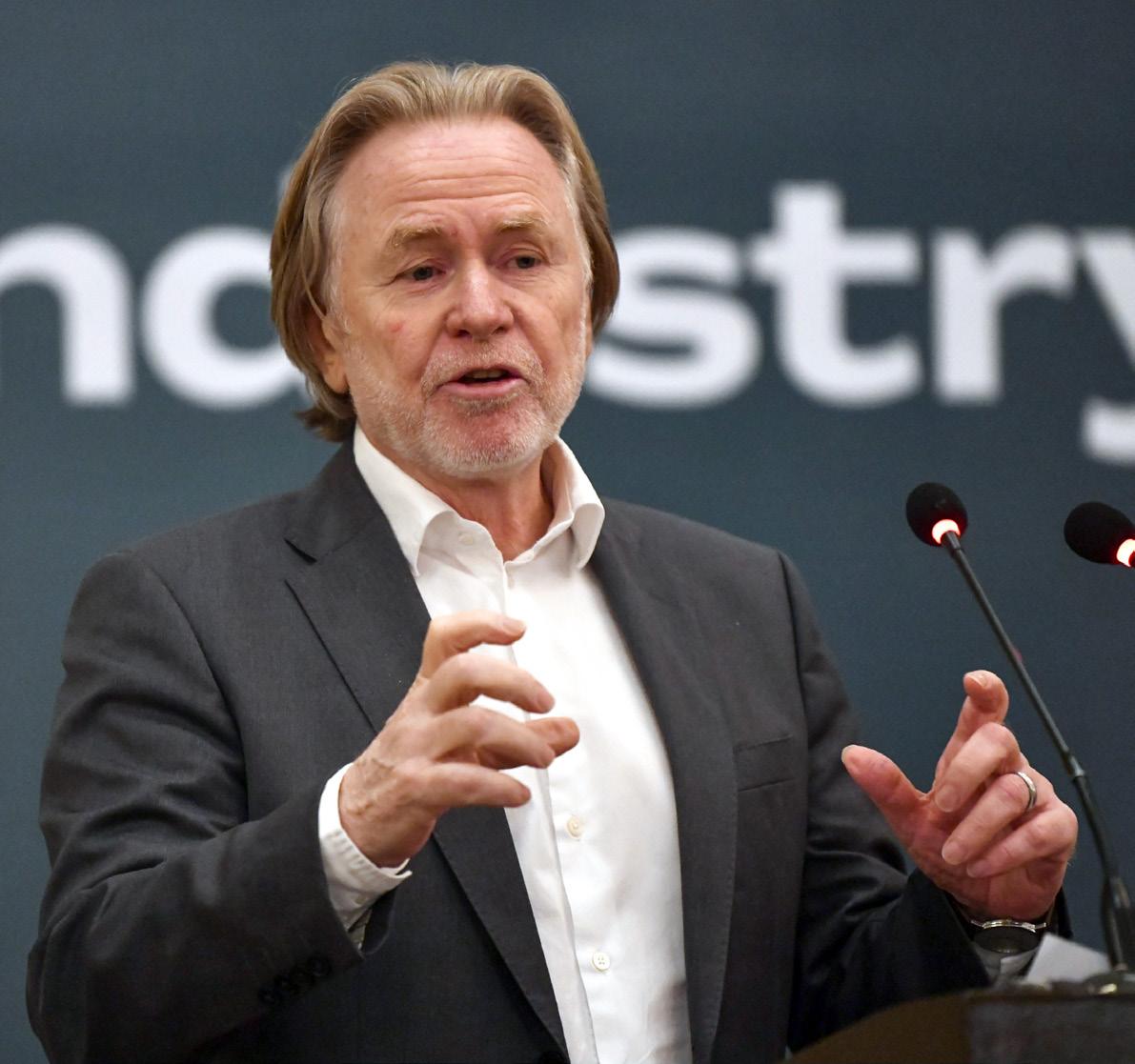
MUMBAI, Sep 25: The India-Australia Quad partnership is strategically aligned as Quad partners in their aim to create an open and free Indo-Pacific region, the Australian High Commissioner to India, Philip Green, said.
In an interview, Green said that the IndoPacific region has a great dynamic and that the Quad countries stand with the region to have free trade and also to have sovereignty, which is free from any state.
"Australia and India are Quad partners, who are strategically aligned. We want Indo-Pacific open and free. There are great dynamics in our regions, but some things hold us back. We want the region where states have free trade and what they want in their sovereignty in their own way, which is free from state, can make choices that suit the peoples of each of their countries," he said.
Green said that the Quad countries have agreed to work in maritime domain security and also to work in the removal of cervical cancer via vaccines in this region.
"We agreed on new work in maritime domain security; we all understand what is happening in our maritime domain, and secondly, we work harder and try to remove cervical cancer via vaccines. Australian PM Anthony Albanese visited India and met Prime Minister Modi and we talked about good things that include many things," he added.
The High Commissioner also discussed
the bilateral relationship between India and Australia, and said there are three underlined drivers that have helped both countries to be a better strategic partner working towards the betterment of the IndoPacific region.
"There are three underlined drivers between India and Australia. We know that Australia and India are strategic partners and friends working together for the betterment of Indo-Pacific relations. Australia and India have strong economies. Australia produces many things that India needs for its next phase of economic growth. And the third thing driving us is that we called it 'Human breach.' There are many Indian-origin people who live in Australia and contribute to the many 4 per cent Indian population in Australia and they are contributing towards our national life as well and it will help the bilateral relationship between India and Australia," he said.
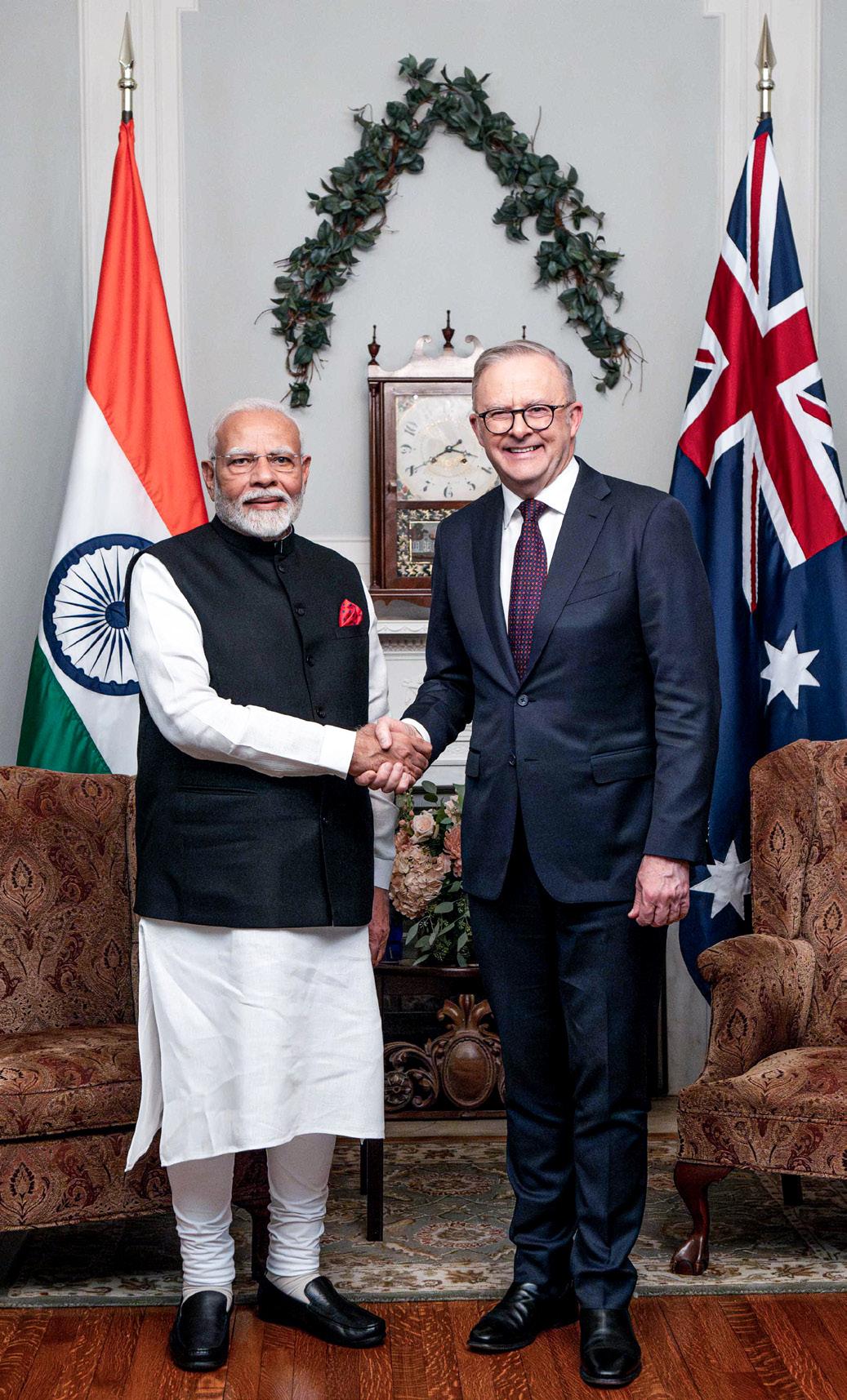
further.
"Between India and Australia, trade from both sides using agreements frequently goes well. On the Indian side, in the first five months of this year, Indian exports of agriculture goods towards Australia and India's exports of iron and steel are up by a quarter, and India's exports towards Australia have gone up to 20 per cent. We are working well but we have to think about how it will grow much in the future by creating free trade between India and Australia through CECA," Green said.
The envoy further said that there has been a rise in trade between both countries and that they are also working for the second phase of the free trade agreement between both countries through the Comprehensive Economic Cooperation Agreement (CECA), but they need to work on how to make it grow
"We think that we can build even better opportunities for businesses, creating more jobs and cheaper commodities to consume in India and Australia. We are keen to resolve the second phase of the free trade agreement between India and Australia; we called it CECA," the envoy added.
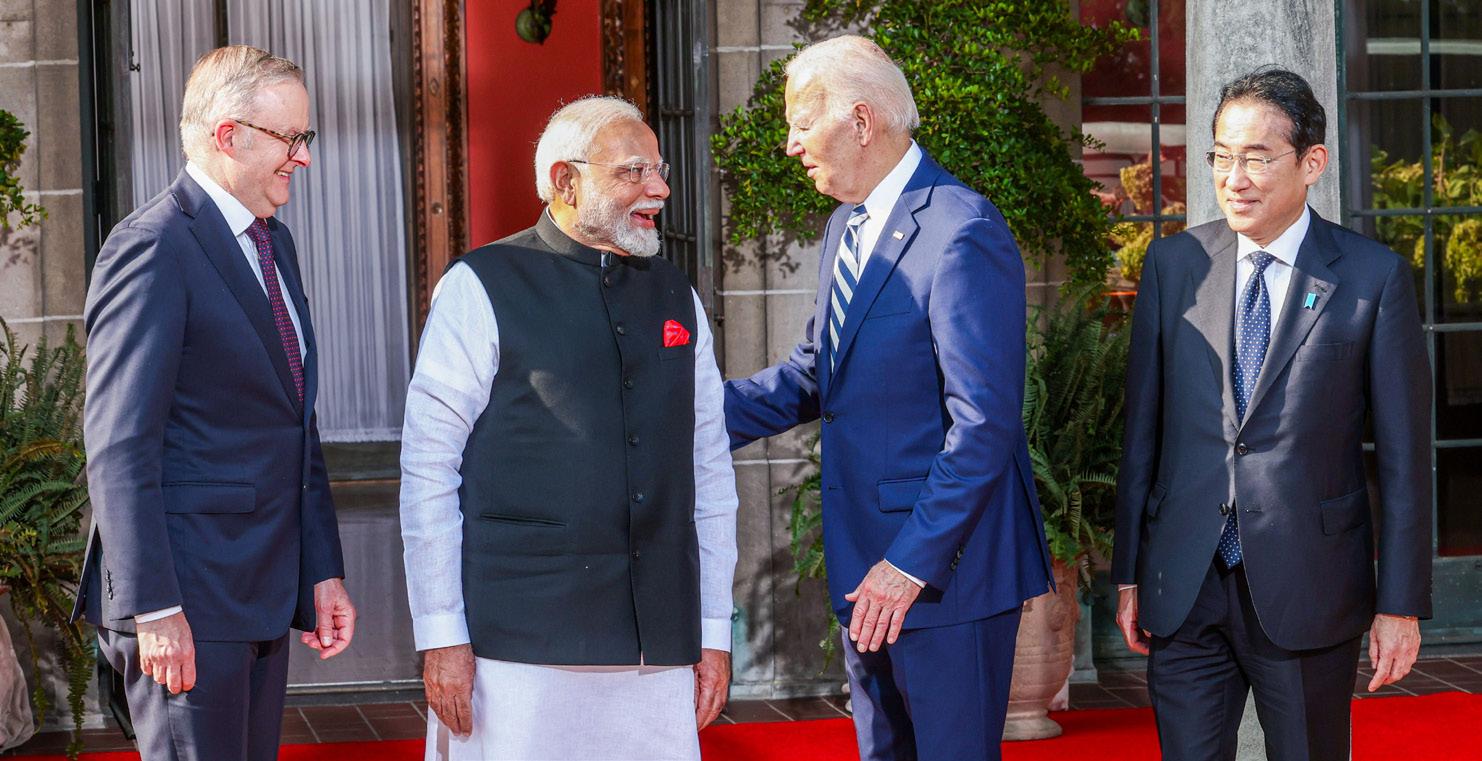
NEW DELHI, Sep 24: Foreign affairs expert Robinder Sachdev said that Prime Minister Narendra Modi's recent visit to the US highlights India's role in global diplomacy, particularly amid the Russia-Ukraine conflict.
Sachdev noted that India, under Modi's leadership, is taking a clear and active stance, adding that this shift is notable, as India, an Asian power, is in a position to mediate in a conflict in Europe.
Sachdev remarked that Prime Minister Modi's third term has marked a significant shift in India's foreign policy. He said, "Since PM Modi entered his third term, the gear of India's foreign policy has changed. In this changing environment, India has decided it will help solve the world's biggest challenges."
He further asserted that India has made it clear that it is working on a peace plan for Ukraine. He said, "India has made it clear to
the world that we are working on this one point peace plan, where peace is not a target, but the only way."
Quoting PM Modi's speech at the Summit of the Future, where he stated that "global ambition must match global action," Sachdev said, "There is a lot of ambition, but there should be action on it. So, India is now taking action regarding the Ukraine war. Regarding this, he (Modi) met Putin (Russian President Vladimir Putin) and Zelenskyy (Ukrainian President Volodymyr Zelenskyy). There were conversations on the phone, and NSA Ajit Doval went to Russia recently."
Sachdev added, "PM Modi also talked to President Joe Biden during the Quad meeting and met Zelenskyy as well. PM Modi is now understanding what is the interest of everyone in this whole process. At the end of the day, everyone will have to adjust, and at this
moment, India is playing a clear, active role. India has never played such a role in world diplomacy, and the most interesting thing would be that an Asian power is in a position to stop a conflict in Europe."
Notably, PM Modi held a bilateral meeting with Ukrainian President Zelenskyy in New York, where both leaders reiterated their commitment to implementing the outcomes of Modi's recent visit to Ukraine. This marked the third time the two leaders had met in the last three months.
While addressing the 'Summit of the Future' on Monday, PM Modi said that cyber, maritime, and space are emerging as new areas of conflict and that it is high time "global action must match global ambition."
PM Modi stressed that terrorism remains a serious threat to global peace and security. "While on one hand, terrorism continues to be a serious threat to global peace and security, on the other hand, cyber, maritime and space are emerging as new areas of conflict. On all these issues, I will stress that global action must match global ambition," he said.
PM Modi participated in the Quad Summit on the first day of his three-day visit to the United States.
At the UN Summit of the Future, world leaders adopted a Pact for the Future, which included a Global Digital Compact and a Declaration on Future Generations. The Pact covered a broad range of themes, including peace and security, sustainable development, climate change, digital cooperation, human rights, gender, youth and future generations, and the transformation of global governance. (ANI)

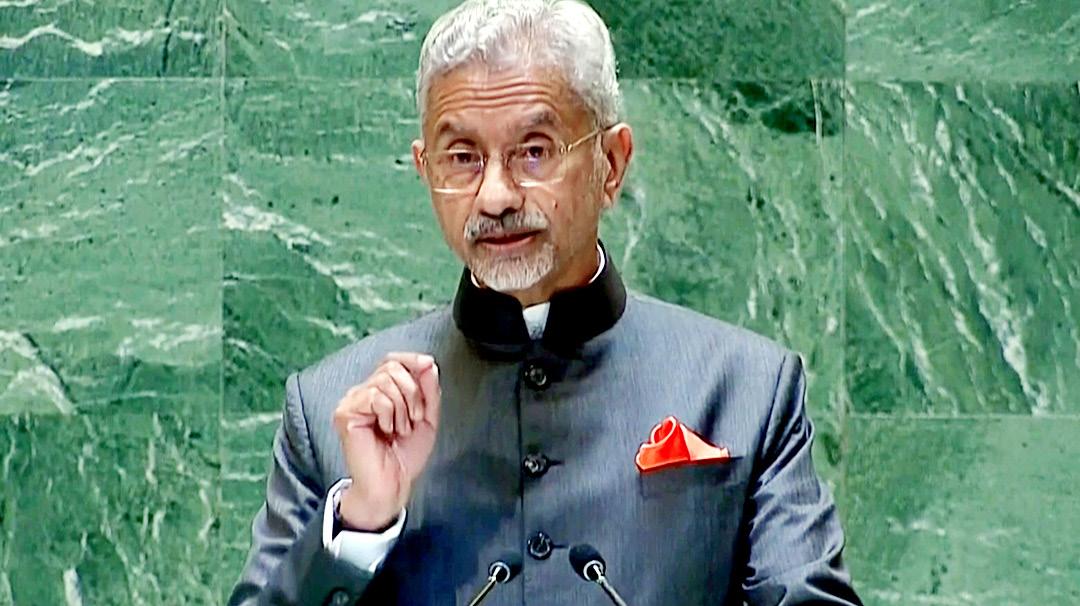
NEW YORK, Sep 26: External Affairs Minister S Jaishankar and his Australian counterpart Senator Penny Wong caught up with each other on the sidelines of the 79th United Nations General Assembly.
Taking to social media platform X, Jaishankar attributed Senator Wong as a "Quad partner".
"Catching up with Quad partner FM Senator Penny Wong at UNGA79," he said.
Prior to this, Jaishankar signed the Biodiversity Beyond National Jurisdiction (BBNJ) agreement at the United Nations Headquarters, taking a step towards ensuring that the oceans remain healthy and resilient.
"Signed the Biodiversity Beyond National Jurisdiction (BBNJ) Agreement today the United Nations HQ. India is proud to join the BBNJ Agreement, an important step towards ensuring that our oceans remain healthy and resilient," he said in another post in X.
Following this, he met with the Foreign Minister of Rawanda, Olivier JP Nduhungirehe and said that it was nice to meet him.
"Nice to meet the new FM Olivier JP Nduhungirehe of Rawanda," Jaishankar said in X.
He also held talks with his Syrian counterpart, Bassam Sabbagh and held
talks on cooperation in health, education and capacity development, as well as sharing their views on the developments in West Asia.
"A cordial meeting with FM Bassam Sabbagh of Syria today. Spoke about cooperation in health, education and capacity development. Shared views on the ongoing developments in West Asia," he said in X.
Besides, he also met with Foreign Minister of El Salvador Alexandra Hill Tinoco and discussed the topics of connectivity, digital, health and capability building.
"Always a delight to meet FM Alexandra Hill Tinoco of El Salvador. We discussed connectivity, digital, health and capability building. And also, our shared desire to reform the global order," he said in another post in X.
Earlier, Jaishankar held a bilateral meeting with his Russian counterpart Sergey Lavrov on Wednesday (local time) on the sidelines of the 79th United Nations General Assembly in New York.
"Russian Foreign Minister Sergey Lavrov and Minister of External Affairs of India Dr. Subrahmanyam Jaishankar hold talks on the sidelines of the 79th Session of the UN General Assembly," the Ministry of Foreign Affairs of Russia said in an X post.
In response to Lavrov's post, Jaishankar posted on X, "Met FM Sergey Lavrov this afternoon at UNGA 79. Discussed our bilateral cooperation and regional issues."
(ANI)
NEW DELHI, Sep 22: To further boost bilateral economic engagement, Union Commerce and Industry Minister Piyush Goyal is set to visit Australia from September 23-25 to interact with leading Australian and Indian CEOs and discuss investment avenues in India.
Commerce Minister will visit the country at the invitation of Senator Don Farrell, Minister of Trade and Tourism of Australia, according to a statement by the Ministry of Commerce and Industry.
Minister Goyal will co-chair with Minister Farrell the 19th India-Australia Joint Ministerial Commission meeting, to be held in Adelaide on September 25, during which both sides will discuss ways to further elevate the bilateral economic engagement.
Commerce Minister will interact with leading Australian and Indian CEOs and industry leaders and representatives from Australian pension funds to highlight the vast opportunities for investment in India.
According to the ministry, the interactions with business and industry leaders are being
organised by Business Council of Australia, Centre for Australia-India relations, India Australia Business Community Alliance, AsiaLink Business and CREDAI.
The discussions are aimed at leveraging the complementary strengths and synergies between the economies of India and Australia.
The minister will also interact with the representatives of the vibrant Indian community in Sydney, Indian-origin chartered accountants and emerging leaders of Indian diaspora from various walks of life.
The visit, according to the ministry, will add further impetus to the strong and growing trade and investment ties between India and Australia, which have received a boost following finalisation of the bilateral Economic Cooperation and Trade Agreement.
India-Australia bilateral trade (in goods and services) has crossed $48 billion, and it's expected to double to nearly $100 billion in the next five years
The minister would also emphasise ‘Make in India’ and ‘Future Made in Australia’ initiatives,
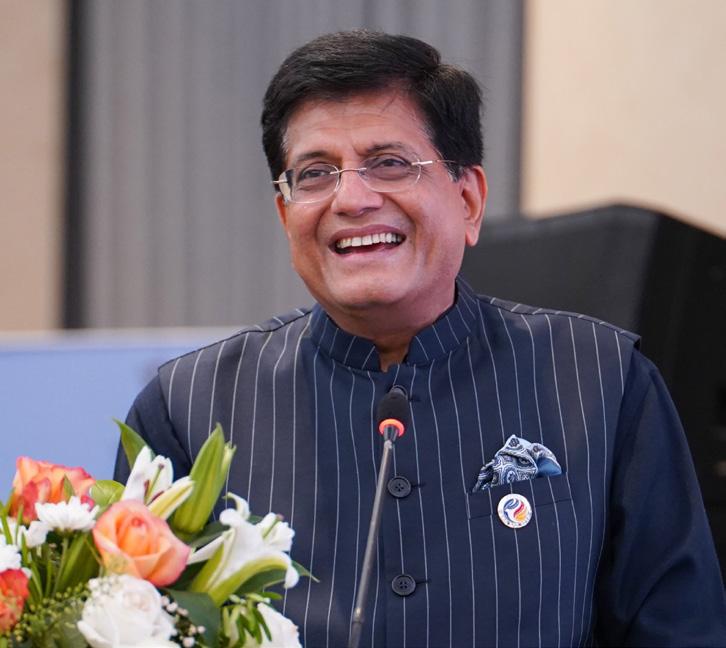
creating more jobs and economic benefits to people of both the countries.
“The visit is particularly opportune as it comes at a time when India and Australia have intensified their engagement both bilaterally and in various fora, such as G20 and the Quad, to work together for global good,” said the ministry.
(IANS)
NEW DELHI, Sep 28: As India aims to become a $3 trillion tourism economy by 2047, it is fast becoming one of the world's most sought-after travel destinations with 14.3 million international tourists in 2022 and $17.6 billion in revenue.
The country saw 9.2 million foreign tourist arrivals in 2023, signifying a positive post-pandemic revival. The tourism industry showed positive signs of revival postpandemic with a year-on-year increase of 43.5 per cent.
This year, foreign tourist arrivals (FTAs) stood at nearly 47.8 lakh from January to June. In the month of June, foreign tourist arrivals stood at 7,06,045 compared to 6,48,008 in June 2023, registering a growth of 9 per cent.
According to the government, despite facing certain challenges along the way, the sector continues to flourish, fuelled by various strategic initiatives aimed at enhancing infrastructure, promoting sustainable practices, and enriching the overall visitor experience.
With a commitment to overcoming obstacles and leveraging opportunities, India is well on its way to becoming a leading global travel destination.
According to the Ministry of Tourism,

as part of the ‘Chalo India’ campaign, the first 1,00,000 foreigners coming to India will get their visa on a gratis basis and the government will waive off the visa fee.
The ministry has also launched the Incredible India Content Hub on the revamped Incredible India digital portal, intended for the use of a diverse range of stakeholders, including tour operators, journalists, students, researchers, film makers, authors, influencers, content creators, government officials, and ambassadors.
In a bid to engage and involve citizens in tourism development and growth, the government is also introducing mechanisms at airports and railway stations across the country, for tourists to provide their feedback on their visits to tourist attractions and destinations in the country.
To support efforts of States/UTs in granting and implementing ‘industry status’ for the tourism and hospitality sector, the ministry has also launched a handbook which aims to serve as a guide to states and UTs.
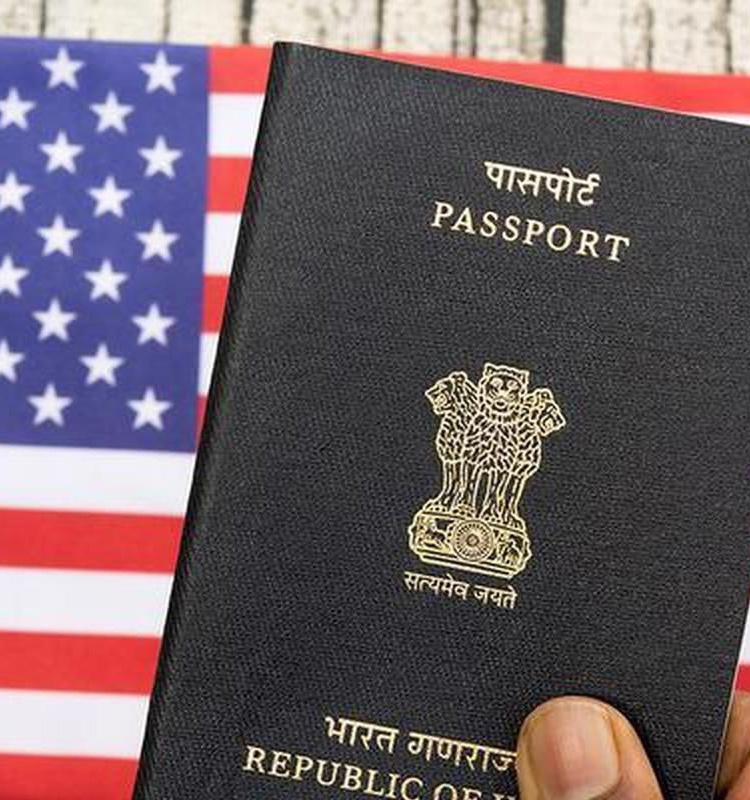
NEW DELHI, Sep 30: The US Embassy in India announced that it has opened an additional 250,000 visa appointments for Indian travellers, including tourists, skilled workers, and students.
"The recently released new slots will help hundreds of thousands of Indian applicants take timely interviews, facilitating the travel
which is the backbone of the people-topeople ties that underpin the US-India relationship," stated the US Mission to India.
It also detailed that the Indian Mission has already surpassed one million non-immigrant visa applications for the second consecutive year.
"During our student visa season this summer, we continued to process record numbers, and all first-time student applicants were able to obtain an appointment at one of our five consular sections around India. We are now focused on bringing families together, connecting businesses, and facilitating tourism," the statement added.
More than 1.2 million Indians have travelled to the United States year to date in 2024, a 35 per cent increase over the same period in 2023.
According to the US Mission, at least six million Indians already have a non-immigrant visa to visit the United States, and each day, it issues thousands more.
The Embassy on Monday highlighted that the United States' "partnership with India is stronger, closer, and more dynamic than any time in history" with the US Senate
designating September 30 as a 'US-India Partnership Day', recognising the contribution of the two countries to one another and a relationship that continues to define the 21st century.
"Prime Minister Narendra Modi and President Joe Biden set an ambitious goal to improve and expedite the visa process and I'm proud to say that we have delivered on that promise. Our consular teams at the embassy and four consulates work tirelessly to ensure that we meet the surging demand," US Ambassador to India Eric Garcetti said recently.
Last week, during his visit to the United States, Prime Minister Narendra Modi had announced that the Indian government will open two new consulates in Boston and Los Angeles.
"Last year, I announced the opening of a new Indian consulate in Seattle. I sought your suggestions for two additional Consulates. India has now decided to open two new consulates in Boston and Los Angeles," remarked PM Modi while interacting with the Indian diaspora in New York's Nassau Coliseum.
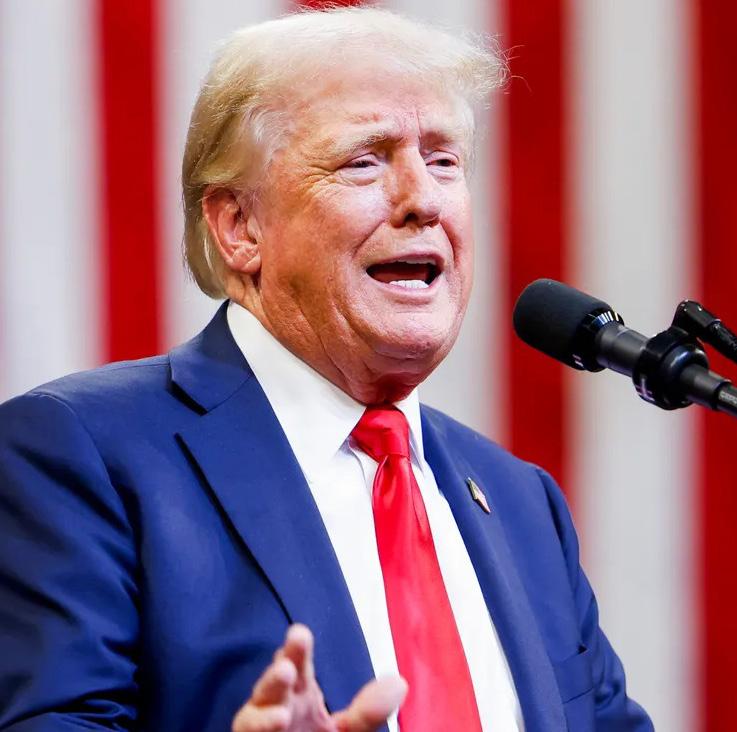
With just close to four weeks till the United States goes into what will be a defining Presidential election, it remains a race too tight to be called. Even as the candidates engage in a full court press in the last weeks, experts say this is going down to the wire.
Emory University political science professor Zachary Peskowitz predicts that the polls will be a "nail-biter" and that no candidate has a decisive lead in any of the seven swing states.
In an interview, Peskowitz says that the electoral college in the US elections will be "extraordinarily close" and the popular vote is going to be "very close."
Former US President Donald Trump and Vice President Kamala Harris are the official presidential candidates of the Republican and the Democratic parties after they accepted the nomination at the conventions earlier this year. The US presidential elections are scheduled to be held on November 5 this year.
Asked about his expectations from the two candidates with regards to electoral college and popular votes, Peskowitz says, "So, I think the popular vote is going to be very close. I think within two or three percentage points one way, or the other, electoral college is going to be extraordinarily close as well. You know, it's
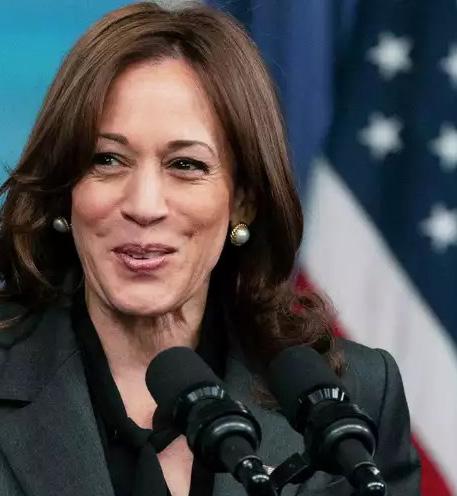
quite possible that there will be a narrow victory."
"There's even a possibility that it will be a tie in electoral college, 269 to 269 that will end up going to the US House of Representatives. You know it's going to be very close and it's going to come down to these seven states. So, all the recent polling shows it's just very close. No candidate has a decisive lead in any of the seven states and it's gonna be a nail-biter," the US university professor says.
On being asked about critical factors in determining the winner of the White House race, he says, "So, this is going to be an extremely close election. The national popular vote is going to be very close, and the electoral college is going to be very close. So, it is all going to come down to those seven swing states. So, you know key issues are going to be mobilizing, mobilizing your voters over the past final few weeks of the campaign, making sure that they get out to vote either in person, mailing ballots and alike and... operations until election day. "
People in every state in the US vote in the Presidential and Vice-Presidential polls. When people cast their vote, they are voting for a group of people called electors. The presidential nominee with the most electoral votes becomes the
Except in the states of Maine and Nebraska, if a candidate receives the majority of the votes from the people of a state then the candidate will receive all electoral votes of that state.
The Electoral College is a process in which electors from each state in number proportional to the state's population cast their vote and determine who will be president. Each state gets a certain number of electors based on its representation in US Congress.
Foreign policy is a "very minor consideration" for the US electorate, says the US professor adding that there will be a pretty small segment of the electorate who will vote based on foreign policy issues in 2024.
"If you look at public opinion polling and what factors have driven voting behaviour in the past, foreign policy is generally a very, very minor consideration for the US electorate, with the exception of cases where US soldiers are actively fighting in a kinetic war. So, Vietnam being a big, prominent example there, Iraq, war in Afghanistan are slightly lesser examples of that. So, it's a big difference in the 2024 election compared to those previous," says Peskowitz.
Asked about US support for Ukraine
amid its ongoing war with Russia, he says, "It's obviously, an important issue, and significant amounts of money are involved in it. But, if you look at the issues that the electorate cares about, foreign policy is just a very minor consideration. So, I think there's some voters who will decide between Trump and Harris on the basis of foreign policy issues in 2024, but it's a pretty small segment of the electorate."
While Indian-Americans are a "small" but "significant part" of the electorates in the US, according to Peskowitz there are prominent Indian-Americans on both sides.
"Indian Americans are small but significant part of the electorates, growing in some important states. Generally, they lean Democratic not overwhelmingly so, but a fairly democratic group, so they could be important in some of the swing states like Georgia. Michigan. Pennsylvania in particular, they all have relatively large Indian American populations," he says.
Asked about who he thinks the Indian Americans will support in the battle between Trump and Harris, he says, "On an average, the Indian American population is more supportive of Harris and Democrats in general. I do think her Indian background is probably a small part of that, but even if it was, you know, a non-Indian candidate top of the ticket, the Democratic candidate would be expected to get support."
Kamala Harris' mother was Indian and her father Jamaican. Her parents had immigrated to the United States. She is the first woman of colour and the first Asian American vice president.
Professor Peskowitz believes that presidential debates are "not very significant" in determining election outcomes and have "very short-term effects" on polls.
"So generally, debates are not very significant in determining election outcomes. They have a short run, very short-term effects on polls, but typically last, you know, a few days or a week or so."
"I don't think the September debate is going to have much of an effect either way nor do I think the October debate between the vice-presidential candidates is going to matter very much. I think it's, you know, all about developments over the next few weeks and mobilising their supporters and getting them to turn out to vote," he adds.
Kamala Harris appeared to dominate in the second presidential debate against Donald Trump, as the two sparred over multiple polarising issues ranging from abortion, illegal immigration and the ongoing conflicts in Ukraine and Gaza. The second presidential debate was hosted by ABC News in Philadelphia, in September.
On the assassination attempts on
Trump and what has led to this level of hatred and political violence in the US, he said, "There's some very intense rhetoric on all sides in the United States. I think you know think more intense than it was 20 years ago, so you know that's probably a contributing factor. The Butler, Pennsylvania incident, there were obviously some very serious security lapses on the part of the Secret Service and local police officials, so that was very, very serious, potentially disastrous situation that the head of the Secret Service resigned over those lapses and errors. I think that's you know certainly played a contributing role and why the first attempt was such a close call and so serious."
When asked whether Trump will benefit out of it, he says, "I think you know if the election was held immediately after the first assassination attempts, maybe. But yeah, this campaign, everything has been living so fast that so many things have happened since then that I doubt it's gonna have an effect on election there."
Peskowitz called abortion rights and other reproductive health issues a "strong issue" for the Democrats. He noted that Trump has tried to move away from Republicans' stance on abortion rights.
"The way I'm thinking about this campaign is there three key issues, the economy, immigration and abortion. So, the economy is the most important one. It's a mixed bag for the Democrats. Abortion and immigration are kind of the most important substantantive policy issues. Abortion is a strong issue for the Democrats and their positions are more appealing to the moderate, decisive voters, whereas immigration is a stronger issue for the Republicans and their positions are stronger, more appealing for you know, the moderate voter."
Asked if Harris is on the back foot on immigration with Trump criticising her over the issue, he said, "Absolutely. So I would say that Harris is on the back foot and on immigration and has to defend some policy positions that are not particularly popular amongst the voters are going to be decisive in this election."
Peskowitz says the economy remains the single most important issue specially with the high inflation rates.
"I think the other most important issue, probably the most important issue is the economy. So, the economy is a real mixed bag in the United States, so some factors are very positive, some are not so positive. So, you know on the positive side for the incumbent administration, the Democrats, there's very low unemployment rates, particular low unemployment rates in some of the swing states like Georgia," he says.
"But on the negative side, inflation had been quite high. It's coming down, the
inflation rate is coming down, but it has been quite high over the Biden Harris administration and voters. You many voters have real concerns about that and are very concerned about the cost of living and what they pay for housing, healthcare, child carers, these other big-ticket items," he adds.
While gun violence is an issue for some of the voters, Peskowitz says that people are more concerned regarding presidential candidates' positions on issues like the economy, immigration, abortion and reproductive issues.
"It's always an issue. It's you know for some voters, it's kind of a top three, top five issue. It will be important for some, but I think attitudes on gun rights and gun control are pretty static right now. People kind of have their position. It's not changing very much," he said.
"Whereas they think on these other issues - economy, immigration, abortion and reproductive issues, the views are maybe a little more fluid and responsive to the positions that the candidates are taking and articulating and their messaging and advertising," he adds.
By Apoorva Kaul


Separate Meetings with the Couple – Part - 3
Where and How - A separate meeting provides the celebrant with an opportunity to check in with each party to establish if they are entering into the marriage voluntarily and freely, and with an understanding of the binding legal nature of marriage.
There is no specific set of questions or words need to be used for the real consent. Open-ended questions often allow the party to express how they feel about their upcoming wedding.
A separate meeting needs to take place in the absence of the other party to the marriage. Celebrant need to speak in person and separately with each party – but this does not mean meeting alone with the party. The party may choose to bring a trusted person. For privacy and safety reasons, no contact should be made with third parties such as family members, interpreters etc, without the express consent of the party.
Separate meetings are to take place in a culturally
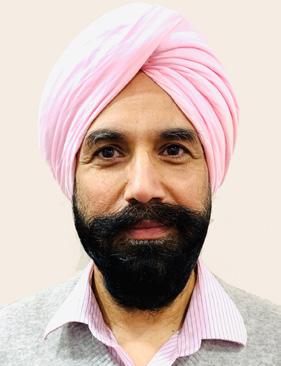
appropriate context and in line with the preferences of the party, including as to the location of the meeting. It can be a public setting provided the privacy of the conversation can be maintained.
If another person attends the meeting with a party, the celebrant should have regard to whether their presence appears to be coercive and take this into account in their decision whether or not to solemnise the marriage. Celebrant should not say anything that may expose the party to risk. Instead, consider following-up with the party by telephone if you have concerns.
JODHPUR, Sep 30: Anita, who was trapped in the shackles of child marriage at the age of just four months, finally got freedom from child marriage after suffering for almost 20 years.
Judge Varun Talwar of Jodhpur's Family Court No. 2 gave a historic decision to annul Anita's child marriage. The family court during its verdict in the case of annulment of child marriage, ordered to husband to pay the litigation expenses to the child bride.
21-year-old Anita, daughter of a farmer family resident of a rural area of Jodhpur district, was married as a child at the age of just 4 months. Thereafter, she continued to suffer the brunt of child marriage. Her in-laws were constantly pressuring her to get her ‘Gauna’ done and send her to her in-laws.
Meanwhile, Anita got information about the campaign of one Kriti Bharti of Saarthi Trust Jodhpur to abolish child marriages. Anita met Kriti and expressed her pain. Kriti then filed a case for annulment of Anita's child marriage in Family Court No. 2 of Jodhpur.
Kriti Bharti advocated on Anita's behalf in the family court and made the court
aware of the facts related to child marriage and age. After which Judge Varun Talwar of Family Court No. 2 gave a historic decision to annul the child marriage that took place 20 years ago when Anita was just 4 months old.
Due to the efforts of Kriti of Saarthi Trust, the court has set a new example by giving a decision to the girl bride to get the expenses of the case from her husband.
Justice Talwar said that child marriage is not only a vice but also a crime which spoils the future of children. “If the girl or boy does not want to continue the child marriage, then they have the right to cancel the child marriage. To eradicate the evil of child marriage, significant efforts are needed at the society level,” Justice Talwar said.
Kriti said that after getting Anita's child marriage annulled, better rehabilitation efforts are now being made for her. The aim of my campaign is to ensure that child marriage gets buried in the history books, she said.
Anita said, "With the help of Kriti Didi, I have become free from the bondage of child marriage. Now I will stand on my feet and fulfil my dreams."
(IANS)

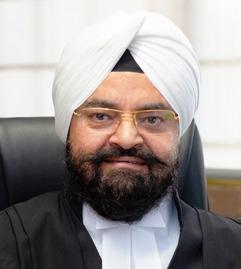
BY GURPAL SINGH

More and more people enter into the binding financial agreements in order to have a safety and security over the assets of the parties to the relationship – be it marriage or de-facto. Such agreements are not immune to the challenge in the court and determination to its validity.
Financial agreements can be made before, during or after cessation of the relationship. The property can be divided between the parties in accordance with the terms of the agreement at the end of the relationship. The financial agreements generally covers as to how the assets of the couple/partners will be divided; how the financial support of either party during the marriage and/or after divorce is determined; any other incidental issues particular to the parties to the relationship.
Certain conditions must be met before the financial agreement can be held legally binding. This includes the signing of the agreement by the parties; independent legal advice and signing of a separate statement by the respective lawyers advising their clients that the parties have sought independent legal advice on how the agreement will affect each party’s rights; the advantages and disadvantages to the person at the time the advice was provided and whether the agreement is fair for both the parties.
A party/spouse also has the right to challenge a legally biding agreement.
Under the provisions of the Family Law Act 1975 (Cth) (the act), a binding financial agreement can be set aside if the agreement was obtained by fraud including non-disclosure of a material matter; if the agreement was entered into to defraud/defeat a creditor or with reckless disregard to the interests of the creditor; if the agreement was obtained for the purposes of defrauding another person who is a party to a de-facto relationship with the party; if the agreement was obtained by duress such that the person was not operating of their own free will when entering into the agreement; if there has been a change in circumstances since the agreement was entered into that make it impractical to carry out all or part of the Agreement; if after making the agreement the circumstances have been materially changed in circumstances relating to the care of a

or a party to the agreement.
A party to the agreement can apply to the court for setting aside the financial agreement. The issue whether a binding financial agreement is binding is a threshold matter that precedes the determination of other substantive property settlement matters is a debateable and has been subject of controversy and argument within the judicial system.
In a relevant case, a spouse sought to set aside the financial agreement due to undue influence or unconscionable conduct and upon success of that application sought property settlement orders and spousal maintenance.
In another case, the party to the marriage sought setting aside the agreement on the basis of hardship. The law requires that a court may make an order setting aside the financial agreement if the court is satisfied that since the making of the agreement, a material change of circumstances has occurred being circumstances relating to the care, welfare and development of a child of the marriage and as a result of the change, the child or, if the applicant has
caring responsibility for the child, a party to the agreement will suffer hardship if the court doesn’t set aside the agreement aside.
The parties in the instant case had entered into a financial agreement prior to the marriage in 2007 and separated in 2017. The husband sought a declaration that the financial agreement was valid and binding.
The wife on the other had sought to set the agreement aside, relying upon the hardship and diagnosis of one of their children from atypical autism, mild functional/adaptive impairment. This diagnosis resulted in significant challenges and behavioural issues for the child resulting in a very high level of care being required by the child. The court found that the emergence and diagnosis of the child’s difficulties were material changes of circumstances as set out in the law and that the identified changes have caused and will continue to cause hardship to both the parties by reason of much more onerous care, responsibilities and increase cost. However, notwithstanding these findings, the court did not consider that the wife would suffer hardship if the agreement was not set aside.
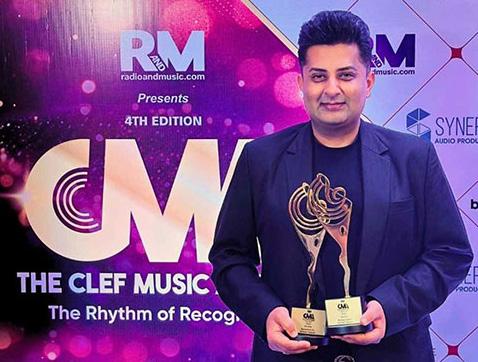
Celebrated singer Sumeet Tappoo, known for his soulful and emotive voice, was honoured at the illustrious CLEF Music Awards, winning two coveted awards at the ceremony held in Mumbai recently. The CLEF Music Awards, an initiative by Radioandmusic.com, have swiftly risen to become India's foremost independent music awards show, celebrating excellence across various genres and languages from all corners of the country.
Now in its fourth year, the CLEF Music Awards brought together an extraordinary gathering of musical talent, featuring dazzling performances and appearances from some of the biggest names in the Indian music industry. Among the notable winners were music legends like Sonu Nigam and Shamir Tandon, underscoring the high calibre of talent honoured at the event.
Sumeet Tappoo, a notable presence in last year's edition, where he took home three awards, was nominated for an impressive nine categories this year. He walked away with two major accolades: Best Artist in the Ghazal category and Best Song in the Ghazal category for his moving piece "Bachpan Ke Din." The song, which also serves as the soundtrack for a short film of the same name, has struck a chord with audiences for its emotional depth and artistry.
The short film " Bachpan Ke Din " was the result of a collaborative effort. Sumeet Tappoo sang the song and composed the music, Subhash Jain Ajal wrote the poignant lyrics, and Supratik Huyi handled the musical arrangements. The short film, brought to life by producers Pratham Chourasiya, Geetesh Yadav
and Parth Dubey, visually complements the song's touching narrative.
Beyond his wins, Sumeet's nominations spanned an array of categories, including Vocalist of the Year, Best Devotional Artist, Best Devotional Composer, Best Devotional Song, Best Ghazal Artist, Best Ghazal, and Best Ghazal Composer -testaments to his versatility and the wide recognition he enjoys within the music fraternity.
"I am absolutely thrilled, honoured, grateful, and humbled to win two 2024 CLEF Music Awards," Sumeet expressed. "Receiving nine nominations was an incredible honour, and winning in two categories feels truly amazing. It's a tremendous blessing to be recognised in a room filled with the best artists in India."
Sumeet also took
a moment to acknowledge his collaborators on "Bachpan Ke Din," giving heartfelt thanks to Subhash Jain Ajal for the inspiring lyrics, Supratik Huyi for the rich musical arrangements, and the short film's production team for their dedication.
In a touching gesture, Sumeet dedicated his awards to his family. "I owe so much to my parents, wife and children for enabling me to pursue my passion," he said, emphasising the importance of their support throughout his career.
Sumeet's win at the CLEF Music Awards follows his latest musical venture, the album 'Dil Pareshan Karta Hai'. This album, a collaboration with iconic poet Gulzar, combines Gulzar's emotional, profound lyrics with Sumeet's soul-stirring voice. Composed by Pt. Bhavdeep Jaipurwale, it is a beautiful fusion of poetry and music, exploring themes of love, longing, introspection and hope.
As Sumeet Tappoo continues to evolve as an artist, his latest accomplishments reflect his ongoing dedication to his craft and his ability to connect with listeners on a deeply emotional level. The CLEF Music Awards have once again highlighted his significant contribution to the world of Indian music, inspiring future generations of musicians and artists.
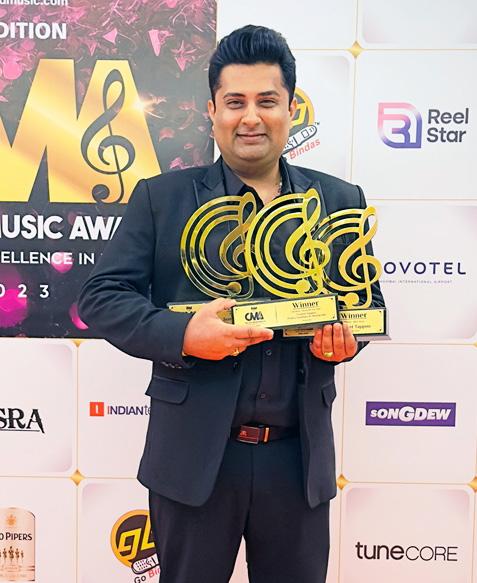

NEW DELHI, Oct 2: Two women officers of the Indian Navy -- Lt. Cdr Roopa A. and Lt. Cdr Dilna K. embarked from Goa on a challenging mission to circumnavigate the globe in over eight months.
The 'Navika Sagar Parikrama' expedition was flagged off from the Naval Ocean Sailing Node, INS Mandovi near Panaji, as both the officers sailed on the Indian Naval Sailing Vessel (INSV) 'Tarini'.
Chief of Naval Staff (CNS) Admiral Dinesh Kumar Tripathi said, "At a time when our nation is once again taking to the seas on its transformational journey to be 'Viksit Bharat', this edition of Navika Sagar Parikrama embodies the indomitable spirit of a 'Sashakt' and 'Saksham' India."
The two women officers are on the Navy's Tarini boat for the Sagar Parikrama mission. It will take eight months to complete the journey, and they will return by May 2025. They will cover around 40,000 km during this journey.
Admiral Dinesh Kumar Tripathi complimented the C-in-C South for selecting such an apt date, October 2, which is Mahatma Gandhi’s birth anniversary. "And, this challenging endeavour is a fitting tribute to the Father of our Nation, whose life exemplified resilience, perseverance and unwavering commitment built on self-belief and self-sufficiency, said he.
The CNS said, "As the daring duo of Roopa and Dilna embark on this formidable journey, I am sure they will embody these very qualities that Gandhiji represented and return triumphant from their Parikrama across the seas."
The Naval Chief said, "Parikrama or circumambulation, in Indian tradition reflects the symbolic expression of devotion or reverence. Indian Navy’s Sagar Parikrama circumnavigation voyages are thus more than just sailing expeditions --they are a
timeless tribute to Lord Varuna and the seas we sail and operate on! This is our way of acknowledging the maritime soul of India and awakening the maritime spirit of every Indian."
"With the spirit of an adventurer, soul of an explorer and self-discipline of a soldier, you -Dilna and Roopa -- represent the confidence, courage and conviction of today’s India and Navy," he added.
"An India that defies societal dogmas and aspires to explore new frontiers. An India that is confident of its capabilities and has the courage to overcome any challenge along the way. Dilna and Roopa, you are the flag-bearers of this resurgent India. You are embarking on a national mission and not just a naval endeavour. Your story will be an inspiration to every Indian woman to break barriers and redefine ‘Nari Shakti.’ You will prove to the world that the possibilities in life are in fact infinite, like the oceans itself, limited only by the bounds of our own imagination and determination," the CNS added.
‘Tarini’ the boat on which the women officers are going to set sail means the ‘Divine Saviour'.
The Navy Chief said, "Remember, when the going gets tough, the tough get going, and that tough times don’t last, but tough teams do. I am pleased to note that Navika Sagar Parikrama will contribute towards progressing national scientific research in collaboration with National Institute of Oceanography for study on marine microplastics and ferrous content across the seas, Wildlife Institute of India for exploration on MegaFaunas or large sea mammals, Sagar Defence for their drones that promise us spectacular visuals of the voyage, and Defence Food Research Laboratory towards providing customised precooked Indian meals so that our valiant warriors always feel
at home."
Admiral Tripathi said, "Dilna and Roopa, as you set sail, the Indian Navy and our families join me in wishing you Fair Winds, and Following Seas … I will be personally monitoring your entire journey. I look forward to hearing your stories of adventure, fortitude and resilience. May you have a memorable journey and a lifetime of memories."
(IANS)

A whopping 94 per cent of business leaders in India expect Artificial Intelligence (AI) to change some office jobs, with over 83 per cent expecting such roles to be replaced, finds a new report.
The report by the British Standards Institute (BSI), a business improvement and standards company, comes amidst widespread optimism about the positive impact of AI tools on productivity and recognition.
The report examines AI’s prospective impact on work, based on 932 business leaders across nine countries. It showed that 86 per cent of people in India believe that companies will be at a competitive disadvantage if they don’t invest in AI.
About 78 per cent in India believe that AI tools should be embraced even if some jobs change or are lost as a result and about 80 per cent agree that innovation is more important than protecting existing jobs.
“AI alone will not replace jobs, but AI paired with robotics or other technology may have a sizeable impact in the long term, potentially reducing reliance on people for repetitive, labour

intensive and often risky tasks on construction sites, in factories and warehouses or even restaurants,” said Theuns Kotze, Managing Director, BSI Group India Private, BSI.
Notably, 98 per cent of business leaders in India were more inclined to see AI as an opportunity than a risk, while 65 per cent expect AI to be used in the next five years to improve productivity and efficiency.
“AI-powered technologies have the power to transform the way we work across all sectors, and we can expect them to shape how companies recruit staff, manage performance,
train employees, and more. At the same time, it is vital that we consider how to retain human creativity, ingenuity, critical thinking, and collaboration,” Kotze said.
“We can use AI to enhance efficiency and productivity, and if we pair it with human insight, empathy, and compassion, we can strengthen organisational culture and foster greater innovation,” Kotze added.
Manual roles are also expected to be shaped by AI, with 82 per cent expecting some to be replaced, likely by AI and robotics together.
The report looks at the prospects for AI to be used in management, job redesign, training, and recruitment, finding that even now 83 per cent of people in India say their organisation is using AI tools to support the candidate recruitment process and a higher proportion (89 per cent) are aware of their business using AI to support any aspect of performance management.
Despite this, HR is not one of the functions expected to be most impacted by AI, with only 33 per cent saying they anticipate this, compared with 67 per cent for marketing, 65 per cent for Finance, and 57 per cent for operations. (IANS)
A recent scientific study revealed that Generative AI (GenAI) can significantly expand the capabilities of workers, enabling them to perform tasks beyond their current skill sets.
The study was conducted by the BCG Henderson Institute, in collaboration with BCG X and Emma Wiles from Boston University.
The study, titled “GenAI Doesn’t Just Increase Productivity. It Expands Capabilities”, explores how GenAI can enhance workers’ ability to take on new tasks, challenging the traditional boundaries of knowledge work.
The findings highlighted the potential of GenAI-augmented workers to tackle new tasks, even when they had little to no prior experience in coding or statistics.
The experiment involved 480 BCG consultants, who completed two of three tasks typically performed by data scientists: writing Python code to merge datasets, building predictive models, and validating ChatGPT-generated statistical

analyses.
These tasks were designed to be difficult for non-specialists and required manual input from the participants, despite the assistance of the GenAI
tool, powered by GPT-4 with advanced data analysis features. Their results were compared with those of 44 BCG data scientists who completed the tasks without AI support.
(IANS)
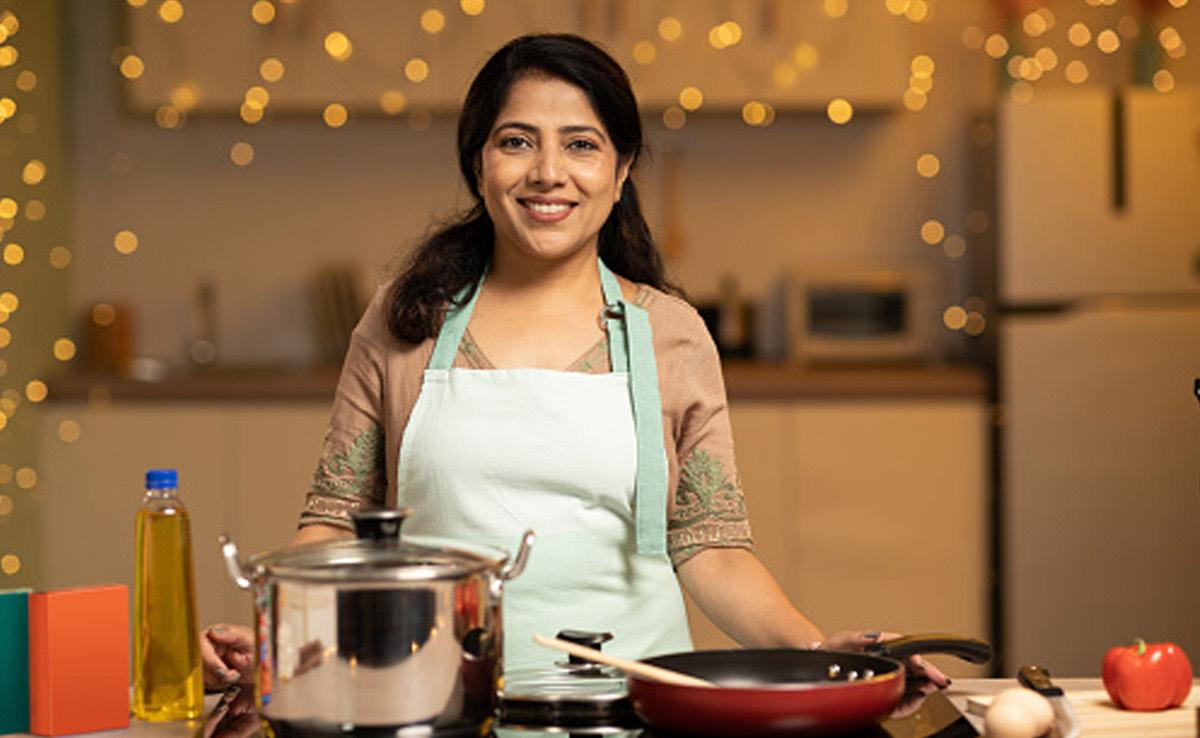
The Indian kitchen is no longer a place for monotony and humdrum- it’s a vibrant space where memories are made. The trifecta of aesthetics, health & experimentation are making their presence felt in kitchens in notable ways - right from the appliances being picked to the kinds of cuisines being cooked at home.
Our Food Trends Report, compiled from data collected across 3000+ households and over 15,000 + cooking sessions using delishUp⤴ in 11 cities, reveals the delightful evolution of Indian home cooking.
In an era, where being health-conscious is on the rise, it’s interesting to see the aspirations and realities of nutritious cooking at home. While 40 percent of owners want to adopt healthier eating habits, data reveals that less than 10 percent consistently do so every day. This highlights the eternal tug-of-war between aspiration and reality, as comfort food often precedes healthy eating.
The kitchen has become a place where regional boundaries blur. The data defies stereotypes, as chapati dough, a staple of North Indian cuisine, is now regularly prepared in Southern India, using AI-assisted cooking devices, constituting 3.5 percent of meals made. Similarly, North and West India owners are increasingly embracing South
Indian delicacies, including Upma, Lemon Rice, Bangalore-style Sambar, and Cabbage Pachadi. Likewise, in the South, more people are cooking dishes like Gujarati Kadhi, Mumbai-style Pav Bhaji, Rice Kheer, and Surti Cold Coco, among others. This crossregional interest reveals the ease with which AI-assisted cooking devices facilitate culinary exploration.
Recreating restaurant-style meals at home is a prominent trend. Nearly 500 owners expressed enthusiasm for replicating their favourite restaurant meals at home. And this trend holds true irrespective of cuisine - 40 percent are recreating Indian cuisines, 20 percent opting for Continental, and another 20% experimenting with Italian. This not only aligns with the desire for healthier eating but also showcases the evolving palate of Indian households eager to transform “outside food” into homemade delights.
Owners are trying to recreate what they see on TV, online and from their travels at home - Butterbeer from Harry Potter, Horchata from Spain, Mexico’s Michelada and more. Unconventional dishes like Bread Paneer Poha, Beetroot Rasam, Roti nu Shaak, Beetroot Halwa, and Chicken Tagine are now making their way to the dinner table. This signals a growing willingness to embrace diverse flavours and experiment at home,
made possible through AI-assisted cooking devices.
Amid culinary exploration, the classics continue to reign supreme. Beloved dishes such as Butter Chicken, Poha and street food favourites like Pav Bhaji and Bhel remain consistent choices in Indian home kitchens. Traditional vegetarian favourites like Veg Pulao and Kadai Paneer continue to win hearts and plates. In fact, data shows that other traditional favourites like Rice Kheer, Vermicelli Payasam and Rasam continue to enjoy widespread popularity and these ageold classics are not being replaced.
In 2023, beyond the sheer diversity of dishes, there’s a profound shift in how we approach home cooking. It is the ease with which young Indian homes are adopting technology to alleviate the monotony of daily cooking that stands out. AI is seamlessly weaving into our daily lives, and its influence extends into the kitchen.
So, let’s embrace the kitchen, explore new horizons, and stop settling for boring food. Join us in this culinary revolution, and let’s savour the flavours of a changing India together. The kitchen is where traditions meet innovation, where flavours unite diverse palates, and where the culinary journey continues to evolve, thanks to the wonders of AI
In today’s fast-paced world, where the demands of modern life take precedence over physical and mental health needs, it is crucial to emphasise the significance of prioritising a healthy lifestyle. However, the journey towards a healthier life poses a challenge for millions of individuals worldwide, largely due to concerns related to weight and obesity. The issue of obesity is undoubtedly multifaceted, with genetic and lifestyle factors contributing to its complexity.
The key to effectively addressing this challenge lies in adopting a positive, resolute approach and embracing a determined mindset. In the pursuit of a healthier life, it’s crucial to shift focus from short-term solutions and instead concentrate on achieving and sustaining long-term weight loss and improved fitness.
The World Health Organization (WHO) reports that obesity rates have been steadily increasing, leading to various health issues such as heart disease, diabetes, and certain types of cancer. With one of the world’s fastest-rising obesity rates, India is fighting a constant health crisis. Moreover, the COVID-19 pandemic has also highlighted the vulnerability of individuals with obesity to severe outcomes.
According to estimates, India has 135 million obese people. A report published by the World Obesity Federation earlier this year highlights that the obesity risk in Indian women will rise to 13 percent, and in men to 8 percent by 2035. These statistics underscore the importance of addressing obesity as a public health issue and the need for individuals to take control of their weight and health.
A few ways which can help you to stay fit and lose weight are as below:
Creating sustainable habits is the foundation for long-term success in weight management. Instead of chasing quick fixes, it is important that you prioritise health-conscious routines. Begin by adopting a balanced diet, incorporating regular physical activity, and mastering stress management. Keep in mind, that consistency is the secret to maintaining a healthy weight. Gradual lifestyle changes pave the way for lasting results.
Incorporating a healthy diet is crucial for managing weight effectively. Incorporating a well-balanced diet while avoiding processed foods and sugary drinks is vital for weight maintenance. Essential minerals such as Zinc and Iron are crucial for antibody production and a strong immune system. For those struggling to maintain a nutritious diet due to a busy lifestyle, convenient on-the-go supplements like Vestige Veslim Shake can be a practical solution. Veslim Shakes are designed to aid weight management by keeping individuals feeling full and reducing junk food cravings. They come in flavours like mango and vanilla, ensuring taste without

compromising on nutrition.
Prioritising adequate sleep is another crucial aspect of a successful weight-loss journey. Quality sleep plays a significant role in regulating hormones that control appetite and metabolism. Aim for 7-9 hours of restful sleep each night.
to support your weight management efforts. Poor sleep can lead to increased cravings for unhealthy foods and hinder your ability to make healthy choices during the day.
Maintaining an active lifestyle is essential for successful weight management. Incorporating enjoyable activities such as walking, cycling, swimming, or dancing to burn calories, where consistency in routine takes precedence over intensity is always helpful. To stay motivated, reach out to friends, family, or professionals. One might also want to explore joining a weight
loss group or consulting with a nutritionist or personal trainer.
Keeping a journal can be a powerful tool for tracking progress and staying accountable. One can use a variety of health monitoring apps to track daily food intake, exercise habits, and physical and mental wellness. This can help identify patterns, triggers for overeating, and areas where adjustments are needed. Parallelly, it also serves as a source of motivation when you can see the positive changes you’ve made over time.
Attaining your weight loss goals is more akin to a marathon, not a sprint, marked by steady and gradual advancement. Patience, consistency, and maintaining a positive mindset are the essential factors to achieving sustained success on this journey towards enhanced health. (IANSlife)

Antibiotics revolutionised the field of medicine, saving countless lives by combating bacterial infections. However, there is one thing that has emerged as a cause of major concern. Their misuse and overuse presents a looming threat: antibiotic resistance.
What is Antibiotic Resistance?
Antibiotic resistance happens when bacteria evolve to withstand the effects of antibiotics, which makes these medications ineffective. This phenomenon is a global threat that is the consequence of overuse and misuse of antibiotics. Resistant infections are harder to treat, leading to prolonged illnesses, increased healthcare costs, and, in some cases, higher mortality rates.
This article delves into 10 crucial facts about antibiotic overuse that need attention. Each point in this article highlights the urgent need for responsible antibiotic use. Agricultural practices, incomplete courses, and the global implications of resistance highlight the interconnected nature of this issue. Understanding these facts is essential for fostering a collective commitment to preserving the efficacy of antibiotics and safeguarding public health.
Antibiotics Are Not Always the Answer: It is important to understand that antibiotics are effective against bacterial infections, not viral ones. Overuse of antibiotics for viral illnesses, like the common cold or flu, contributes to antibiotic resistance. Therefore, their excessive use to treat viral infections must be prevented.
Antibiotic Resistance is a Growing
Threat: Not many people are aware, but the phenomenon of antibiotic resistance is a growing threat. Overusing antibiotics leads to the development of bacteria that is resistant, thus reducing the effects of antibiotics and making infections harder to treat. This global issue poses a significant threat to public health.
Incomplete Courses Contribute to Resistance: One of the most important things that contributes to antibiotic resistance is not completing the antibiotic course. Not finishing a prescribed antibiotic course can leave surviving bacteria more resistant. It’s therefore crucial to complete the full course as directed by a healthcare professional.
Agricultural Practices Contribute to Antibiotic Resistance: Surprisingly, agricultural practices are also contributing to antibiotic resistance. This is because antibiotics are often used in agriculture for promoting animal growth. This contributes to the spread of resistant strains, affecting both animals as well as humans.
Emergence of Superbugs: Resistant bacteria, or “superbugs,” are evolving rapidly evolving. This is due to the overuse of antibiotics. Some strains are resistant to multiple antibiotics, complicating the treatment options.
Possibility of Secondary Infections Arising: Weakened by broad-spectrum antibiotics, the body becomes susceptible to secondary infections like Clostridium difficile (C. diff), resulting in severe complications.
Individual Actions Matter: Each person’s responsible use of antibiotics
can collectively contribute in combating resistance. Avoid self-prescribing and only take antibiotics when they are prescribed by a qualified healthcare professional.
Global Collaboration is Important: Addressing the grave concern of antibiotic resistance requires a global effort. Cooperation between healthcare providers, researchers, policymakers, and the public is crucial for effective solutions.
Existence of Research and Development Gaps: The need of the hour is new antibiotics and alternative treatments. However, due to financial challenges, pharmaceutical companies may be hesitant to invest in research for new antimicrobial agents.
Education is the Key: Raising awareness and educating people about antibiotic overuse and resistance is essential. Education campaigns can empower individuals to make informed decisions, and eventually reducing the unnecessary antibiotic use. This can significantly help in reducing antibiotic resistance.
To sum up, understanding antibiotic resistance and the impact of antibiotic overuse is necessary for safeguarding our health and the effectiveness of these crucial medications. By adopting responsible practices, supporting research, and fostering global collaboration, we can deal with the challenges posed by antibiotic resistance.”
By Dr. Namita Jaggi

After giving birth, up to one-third of mothers fail to form strong attachments with their children, leaving both mother and child in severe emotional distress. Researchers have now discovered that they may teach expectant moms who are at risk for postpartum depression to notice and control their emotions more effectively.
Presenting the work at the ECNP Congress in Barcelona, researcher Dr Anne Bjertrup said, “People generally have an automatic tendency to see the positive or negative in any situation. In previous studies we saw that certain expectant mothers tended to perceive mostly negative emotions in relation to babies. This took several forms. In some cases, the expectant mother would look at babies and mistakenly think that they were distressed or unhappy, when in fact they weren’t. In other cases where the baby was distressed, they were emotionally unable to deal with this. So, we had to see if we could train them, to help them avoid this negative bias and their own reaction during motherhood”.
The work has just been published in the peer-reviewed journal Neuroscience Applied2.
The proof-of-concept study included 45 expectant mothers from hospitals in Copenhagen. 23 of them were at high risk of postpartum depression and potentially not bonding with their child, having suffered from earlier depression. The remaining 22 had no depression history and were classified as having a low risk3. All were assessed at the beginning of the study to see how they responded to various “baby emotions”. The women at high-risk then underwent a series of computer-based training sessions aimed at helping them cope with difficult emotions, and after two weeks they were reassessed.
Anne Bjertrup (of the Psychiatric Centre Copenhagen- NEAD Centre, Copenhagen, Denmark) said, “With the at-risk women we were trying to communicate different things. For example, to make the worried expectant mothers focus on how a baby really expressed itself not just what she thought she saw, and then to respond appropriately. We tried to make sure that the women could accurately recognise the emotion a baby was showing, and we got them to visualise how to properly respond to these emotions”.
After the training, women in the high-risk group were significantly better at recognising happy babies; the women were themselves able to show more happy facial expressions and reacted less to signs of infant distress.
Dr Bjertrup Continued, “We found that participants’ perceptions of infant facial expressions shifted significantly after the training. For example, before the training, they

viewed ambiguous baby facial expressions as slightly negative. After the training, this perception became positive, marking a 5 per cent shift towards a positive perception on our rating scale. Importantly, those who showed the most improvement in recognizing happy baby expressions had fewer indications of depression six months post-childbirth. Those who improved the most in recognizing happy baby expressions had fewer signs of depression six months after giving birth.
This means that if we can train expecting mothers to be more sensitive to happy expressions and give them back control over their emotional reactions toward baby distress, it might reduce the risk of postpartum depression. This not only benefits the mother but also contributes to a healthier emotional development for the baby”.
She added “This is a preliminary study, so we need to interpret these results cautiously. We are currently undertaking a bigger trial, which will include a control group. Nevertheless, these initial results are promising. We’re amongst the first groups anywhere to really explore how we can use emotional cognitive processes to prevent this significant mental illness and mother-infant bonding problem”.
In the EU alone, there are around 4 million births every year, meaning that well over a million mothers and babies will be having bonding problems. Not bonding can have
serious impacts on, mother and child, and families. Children may find it difficult to develop secure attachments in later life, although this also depends on what happens in early life. A mother may find it difficult to bond for various reasons, such as hormonal changes, stress, or past traumas. This can lead to a sense of shame or inadequacy, with many mothers refusing to acknowledge their difficulties. Many respond by emotionally closing down, creating a vicious cycle of alienation.
Dr Bjertrup added, “It’s important to recognize that bonding challenges, outside of PostPartum Depression or other mental illnesses, can stem from various factors. Not experiencing immediate bonding feelings as, one might expect doesn’t inherently signal an issue. A mother might not have immediate bonding feelings yet can still respond sensitively and appropriately to her infant’s emotions and cues”.
Commenting, Dr Mijke Lambregtse - van den Berg, Infant Mental Health Specialist at Erasmus Medical Center, Rotterdam, said: “Postpartum depression is a serious condition, not only affecting the mother, but also her child. This promising study not only stresses the importance of early mother-child bonding, it also trains expectant mothers at risk in how to better recognise positive emotions in babies. Reinforcing a positive mother-baby interaction might ultimately prevent postpartum depression as well.” (ANI)
The commonly held belief that attempting to suppress negative thoughts is bad for our mental health could be wrong, suggests a new study.
Scientists at the University of Cambridge trained 120 volunteers across 16 countries to suppress thoughts about negative events that worried them and found that not only did these become less vivid, but that the participants’ mental health also improved.
“We’re all familiar with the Freudian idea that if we suppress our feelings or thoughts, then these thoughts remain in our unconscious, influencing our behaviour and well-being perniciously,” said Professor Michael Anderson from the varsity’s Medical Research Council (MRC) Cognition and Brain Sciences Unit.
“The whole point of psychotherapy is to dredge up these thoughts so one can deal with them and rob them of their power. In more recent years, we’ve been told that suppressing thoughts is intrinsically ineffective and that it actually causes people to think the thought more -- it’s the classic idea of ‘Don’t think about a pink elephant’,” he said.
These ideas have become dogma in the clinical treatment realm, said Anderson, with national guidelines talking about thought avoidance as a major maladaptive coping behaviour to be eliminated and overcome in depression, anxiety, post-traumatic stress disorder (PTSD), for example.
Dr. Zulkayda Mamat, from Trinity College, Cambridge believed that inhibitory control was critical in overcoming trauma in experiences occurring to herself and many others she has encountered in life.
She had wanted to investigate whether this was an innate ability or something that was learnt and hence could be taught.
“Because of the pandemic, we were seeing a need in the community to help people cope with surging anxiety. There was already a mental health crisis, a hidden epidemic of mental health problems, and this was getting worse. So, with that backdrop, we decided to see if we could help people cope better,” Dr. Mamat said.
In the study, published in Science Advances, each participant was asked to think of a number of scenarios that might plausibly occur in their lives over the next two years -- 20 negative “fears and worries” that they were afraid might happen, 20 positive “hopes and dreams,” and 36 routine and mundane neutral events.
The fears had to be worries of current concern to them, that have repeatedly intruded in their thoughts. “It was very clear that those events that participants practised suppressing were less vivid, less emotionally anxietyinducing, than the other events and that overall, participants improved in terms of their mental health. But we saw the biggest effect among those participants who were given practice at suppressing fearful, rather than neutral, thoughts,” Dr. Mamat said.
Suppressing thoughts even improved mental

health among participants with likely posttraumatic stress disorder.
Among participants with post-traumatic stress who suppressed negative thoughts, their negative mental health indices scores fell on average by 16 per cent (compared to a 5 per cent fall for similar participants suppressing neutral events), whereas positive mental health indices scores increased by almost 10 per cent.
In general, people with worse mental health symptoms at the outset of the study improved
more after suppression training, but only if they suppressed their fears.
This finding directly contradicts the notion that suppression is a maladaptive coping process.
“What we found runs counter to the accepted narrative,” said Professor Anderson. “Although more work will be needed to confirm the findings, it seems like it is possible and could even be potentially beneficial to actively suppress our fearful thoughts.
(IANS)


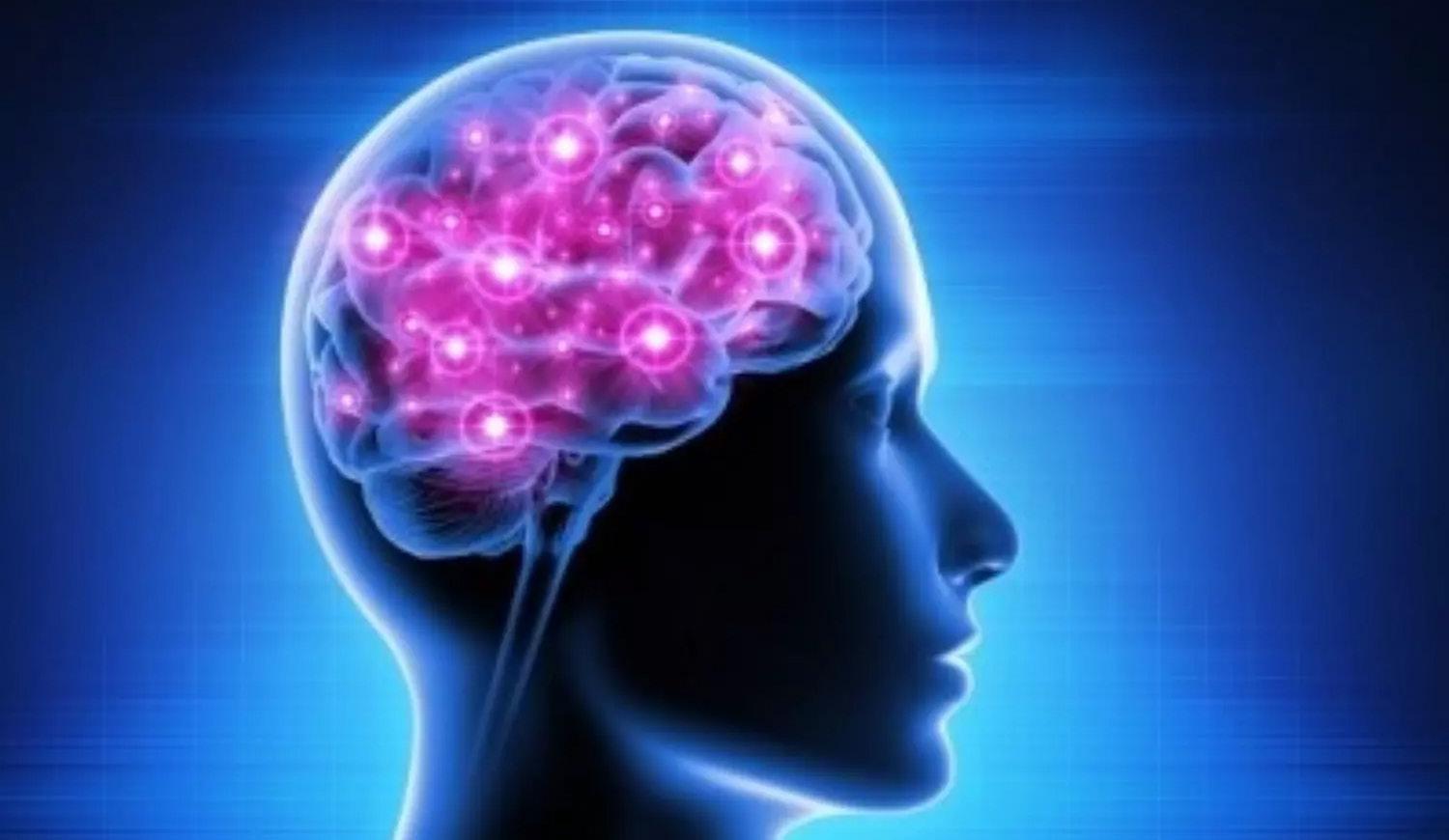
Australian research has linked stroke to immediate and accelerated long-term cognitive decline.
In a study published, researchers from the Centre for Healthy Brain Ageing (CHeBA) at the University of New South Wales Sydney found that older adults who have a stroke for the first time experience substantial immediate cognitive decline.
Stroke occurs when blood flow to the brain is blocked or reduced, damaging brain cells. According to the World Health Organization, 15 million people worldwide suffer a stroke every year -- 10 million of whom either die or are left permanently disabled.
The CHeBA team analysed data from 14 studies spanning 11 countries that tracked the health and cognitive abilities of 20,860 community-dwelling adults -- with an average of 73 years -- who did not have a history of dementia or stroke.
All participants exhibited a moderate rate of cognitive decline before any stroke -- which researchers attributed to typical ageing and health conditions -- but those

who experienced a stroke during the study period suffered a significant immediate drop in all areas of cognitive performance.
The immediate cognitive decline was followed by an accelerated long-term
decline.
“By analysing their cognitive abilities over several assessment time points before and after stroke, we mapped out the course of changes in their thinking and memory over the periods before and after stroke, and therefore, were able to determine the changes in cognitive ability due to a stroke,” Jess Lo, a CHeBA biostatistician and leader of the research, said in a media release.
Individuals who had a history of diabetes, high cholesterol, depression, hypertension, heart disease, smoking or carried the gene APOE4 -- a major risk factor in developing Alzheimer’s disease -- exhibited significantly faster cognitive decline before any stroke.
Lo said the findings support the hypothesis that vascular risk factors have their greatest impact on cognitive function years before stroke onset and that targeting risk factors at an early stage could reduce the risk of stroke and strokerelated cognitive decline.

Consuming 3-5 cups of coffee daily can help lower your risk of diabetes, hypertension or high blood pressure, and fatty liver risk, according to a top neurologist.
While coffee is known to provide multiple health benefits, the expert suggested drinking the beverage without sugar and with less milk. Taking to social media platform X, Dr. Sudhir Kumar from Indraprastha Apollo Hospitals, Hyderabad, listed out some health benefits of coffee.
“Most notable benefits are lower risk of type 2 diabetes, coronary artery disease, stroke, fatty liver, hypertension, chronic kidney disease, depression, and certain cancers,” he said.
“Coffee drinking increases longevity. 3-5 cups of coffee per day is considered safe and healthy. Avoid adding sugar to coffee,” he added.
The expert also advised caution for people with insomnia to “avoid drinking coffee for about 5-6 hours prior to bedtime”.
While “pregnant women should limit their coffee intake to 1-2 cups per day, people with severe hypertension should switch to green tea or limit their coffee intake to 1 cup per day”, Kumar said.

Flavanols, compounds in chocolate, are thought to improve circulation, including blood flow to the brain
The structure of a tooth is made up of various layers. The innermost part is made up of a soft substance and is known as pulp. This pulp is connected to a nerve which further gets attached to the sensory network of nerves transmitting sensations. The outer layer of a tooth envelopes both these inner components and protects them from harm.
But in case of tooth decay, the acids produced by the bacteria go past the protective layer and reach the pulp of a tooth. That’s when endodontists prefer to go for a root canal treatment. Let us read the cases when root canal treatments are a must.
THE REASONS TO CARRY OUT ROOT CANAL
The beverage is safe “in people with high normal BP and Grade 1 hypertension”.
The expert explained that the high levels of antihypertensive nutrients (that is, vitamin E, niacin, potassium, and magnesium) and polyphenols in coffee may be why coffee is associated with a higher risk of hypertension.
People suffering from severe hypertension can prefer green tea over coffee, suggested Kumar.
Several research have backed the health benefits of coffee, including for Parkinson’s and Alzheimer’s diseases.
A study, published online in the April issue of the journal Neurology, showed that the highest coffee consumers had a 37 per cent reduced risk of getting Parkinson’s disease, compared to those who do not drink.
Another study, published in ACS’ Journal of Agricultural and Food Chemistry, showed that, in preliminary in vitro laboratory tests, espresso compounds can inhibit tau protein aggregation -- a process that is believed to be involved in the onset of Alzheimer’s disease.
(IANS)
Deep decay
Tooth decay is the worst enemy of our teeth. Bacteria enter the cavities in our teeth causing considerable damage as tooth decay. Anti-bacterial medications prove futile as the inflammation caused by the bacterial infection hinders the blood supply to a tooth.
As mentioned above, when the decay reaches deep down to the nerve of a tooth, a root canal treatment is the call of the hour. When left untreated, deep decay can spread to gums and other parts of our bodies such as the lungs or the brain.
Cracked or chipped tooth
Our teeth are fragile enough to crack or chip-off when subjected to trauma. This can also occur while chewing hard foods such as nuts, ice, corn on the cob, rock candies, etc. Cracked teeth can or cannot be painful, but they can always hold room for food particles to get stuck which is a breeding ground for tooth caries.
These damaged teeth need to be repaired to fill the cracks and chipped off parts. Root canal treatment makes sure the decay does not reach to the pulp.
Repeated procedures
The process of degeneration of our natural teeth is a continuous one and any laxity in their care can result in decay time and again. What follows are extensive dental restorative works. In cases where not much of the tooth structure is left, dentists prefer to put on a dental crown on the tooth after performing root canal treatment. Injury to pulp
Tooth decay is not the only culprit to harm dental pulp. There are times when the dental pulp gets damaged due to trauma. It can be

an extremely painful condition and requires to be treated as soon as possible. Dentists often prefer root canal treatment for such injuries as they can be deep and cause much harm to the pulp.
Measuring
This is the preliminary stage where a dentist first sedates the patient with light sedatives to numb the area around the damaged tooth. The tooth is then drilled up to the pulp chamber. Measurements of the root canal are then carried out to know the extent of decay and possible treatment options. This measurement is done with the help of X-rays or Apex locator.
Cleaning
The decay or damage to the pulp is removed from the measured tooth. The root canal inside the tooth is then thoroughly cleaned with an antiseptic solution. The hole is filled with a temporary filling and left as such for a few days to ascertain any sensitivity.
Filling
Once the tooth is free from all the infection, the temporary filling is replaced with a permanent filling.
Additional Treatment
If the tooth structure is still found fragile, it can be capped with a dental crown. Otherwise, the above three steps are enough to cure a tooth.
To know more about root canal treatment, visit our Healthy Smiles Dental Group Blackburn clinic. You can also call us on 03 9877 2035 to book an appointment
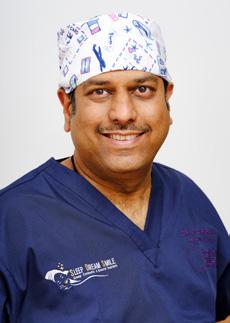
Dr Ved Berani BDS(Mum), ADEC(Aust), MBA(Melb), FIADFE, MFGDP(UK)
Principal Dentist & Clinical Advisor
Healthy Smiles Dental Group 150-152 Canterbury Rd, Blackburn South VIC 3130 Call us: (03) 9877 2035 www.healthysmiles.com.au
Evidence is increasing to show the link between air pollution and the risk of Parkinson’s disease, health experts said.
More than 10 million people worldwide are living with Parkinson’s disease. India alone shares almost 10 per cent of the global burden of Parkinson’s disease.
A recent study, published in the JAMA Network Open, showed higher levels of particulate matter (PM2.5) and nitrogen dioxide (NO2) exposure were associated with increased risk of Parkinson’s.
“Yes, there is growing evidence that air pollution can increase the risk of developing Parkinson’s disease,” Dr Anshu Rohtagi Senior Neurologist, Sir Ganga Ram Hospital, told IANS.
“Recent studies have shown that exposure to pollutants like PM2.5 and NO2 can also worsen Parkinson’s symptoms,” Rohtagi added.
PM2.5 is a harmful substance that can penetrate the lungs and affect our health.
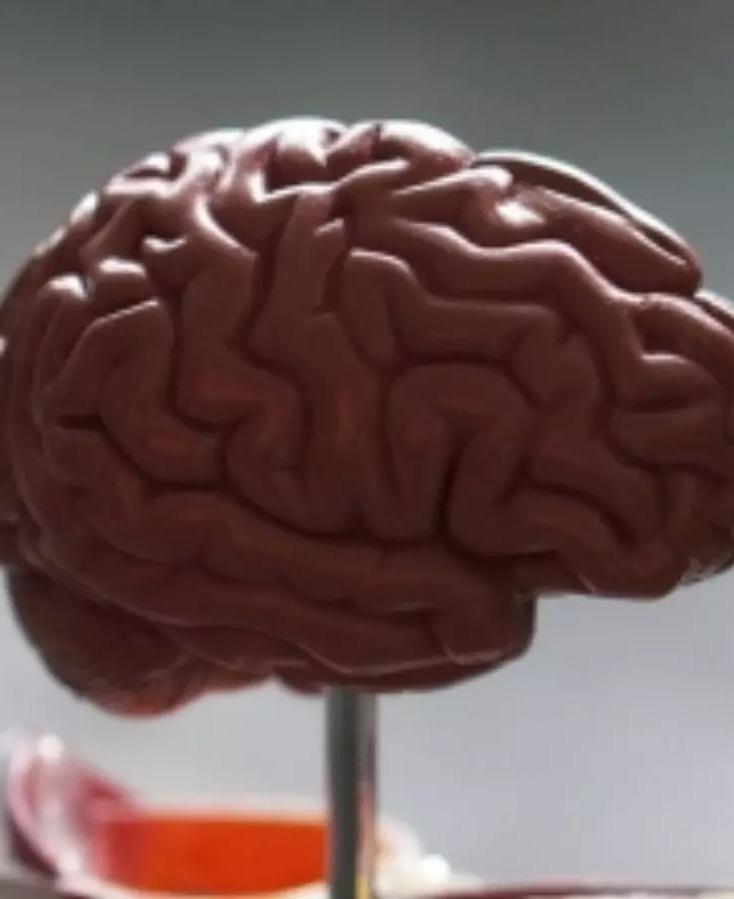
It can come from natural sources like volcanoes and deserts or human activities like industry, cars, agriculture, domestic burning, and climate change-related fires.
Besides Parkinson’s, PM2.5 has been linked to various health issues, including asthma, reduced lung health, increased risk of cancer and heart disease, and
diabetes, and Alzheimer’s.
The World Health Organization (WHO) recommends an annual average concentration of 5 micrograms per cubic meter air (5 ug/m³) as very good air quality. However, 99 per cent of the world’s population lives with concentrations above this value.
Rohtagi said higher levels of air pollution, particularly in metropolitan areas, are associated with a greater risk of developing Parkinson’s disease.
For those already diagnosed with Parkinson’s, exposure to air pollution can lead to more severe disease progression and symptoms.
“Pollutants like PM2.5 can cross the blood-brain barrier, causing inflammation and oxidative stress, which are believed to contribute to the development and progression of Parkinson’s disease,” the expert noted.
Finding it hard to manage blood sugar levels?
Take heart, limiting your food consumption to a 10-hour window daily may keep your diabetes in check, according to a study.
Following the 10-hour eating window, a type of intermittent fasting, can also help you manage metabolic syndrome -- a group of medical conditions that can lead to heart disease, diabetes, and stroke.
Risk factors attributing to the syndrome include elevated blood sugar, high blood pressure, and high cholesterol -- key factors for poor heart health.
Researchers led by the University of California San Diego and Salk Institute in the US said the findings may help people looking to address their metabolic syndrome and reduce their risk for Type 2 diabetes.
In the trial, published online in the Annals of Internal Medicine, 108 adult patients with metabolic syndrome were randomised into either a time-restricted eating group or a control group.
Both groups continued to receive standardof-care treatments and underwent nutritional counselling on the Mediterranean diet.
In the time-restricted eating group, each
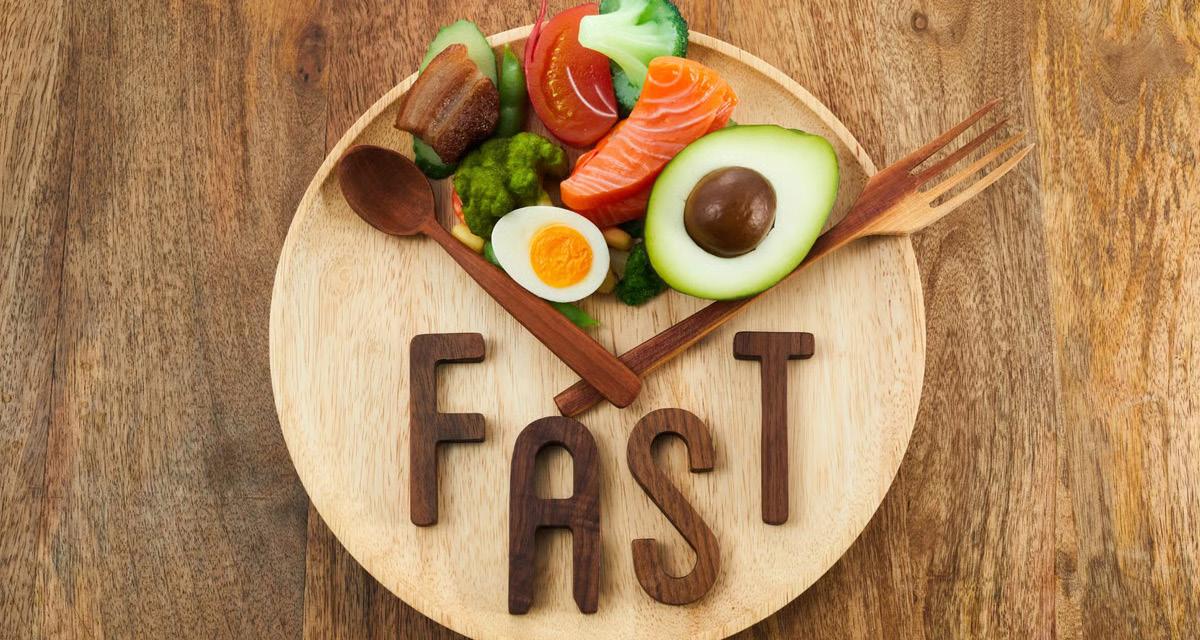
person had to reduce their eating window to 10 hours per day, which began at least one hour after waking up and ended at least three hours before going to sleep.
After three months, patients who had completed the time-restricted eating regimen showed significant improvements in key indicators of heart health.
Satchidananda Panda, a professor at the Salk Institute explained that the time of day plays an important role in human bodies’ processing of sugars and fats.
When people limit their eating window, they “re-engage the body’s natural wisdom and harness its daily circadian rhythms to restore metabolism and improve health”.
The routine also helped people lose body weight, maintain proper body mass index (BMI), and manage abdominal trunk fat -- a type of fat closely linked to metabolic disease, the researchers said. Importantly, participants did not experience significant loss of lean muscle mass, which is often a concern with weight loss.
High cholesterol and microplastics are emerging as extremely dangerous risk factors for cardiovascular diseases, like heart attack and stroke, said experts on Saturday.
While cholesterol has traditionally been linked to an older population, recent years have shown a marked increase in cholesterol among youngsters.
This silent health concern often goes unnoticed, as high cholesterol typically does not show clear symptoms until serious damage has been done.
Dr. Preeti Gupta, Professor of Cardiology at Safdarjung Hospital, Delhi said that early screenings and keeping cholesterol and LDL-C levels (bad cholesterol) in check, can make a big difference.
Regular lipid profile testing and staying on top of your health can help catch any warning signs before they become serious problems.
“Elevated LDL-C levels are a significant contributor to coronary artery disease, which can lead to heart attacks and strokes. Monitoring and managing these levels through lifestyle changes and medication, if necessary, are key to preventing heart disease,” Gupta said.
“For people with comorbidities like diabetes or hypertension, the lipid profile becomes even more crucial, as they are at higher risk of developing heart issues,” she added.
According to recent guidelines from the Cardiological Society of India, LDL-C levels should be monitored regularly to ensure they stay within optimal ranges, particularly in highrisk individuals.
The lipid profile is one of the most important tests for assessing cardiovascular risk, as it provides a detailed view of cholesterol levels, including LDL-C (bad cholesterol), HDL-C (good cholesterol), and triglycerides.
Gupta recommended “starting the test at age 18 and to repeat every 4-6 years unless risk factors suggest more frequent testing”.
Dr Vidya Suratkal, Cardiologist, Lilavati Hospital Mumbai, said that “high cholesterol levels in youngsters aged 19-24 can cause a 50 per cent spike in heart disease risk during middle age (35-50)”.
“About 7 out of 10 youngsters visiting me are having high cholesterol levels,” he added.
The experts cited obesity, smoking, family history, genetics, thyroid problems, unhealthy diet, high blood pressure, sedentary lifestyles, and alcohol as the major risk factors for elevated cholesterol levels, which are putting
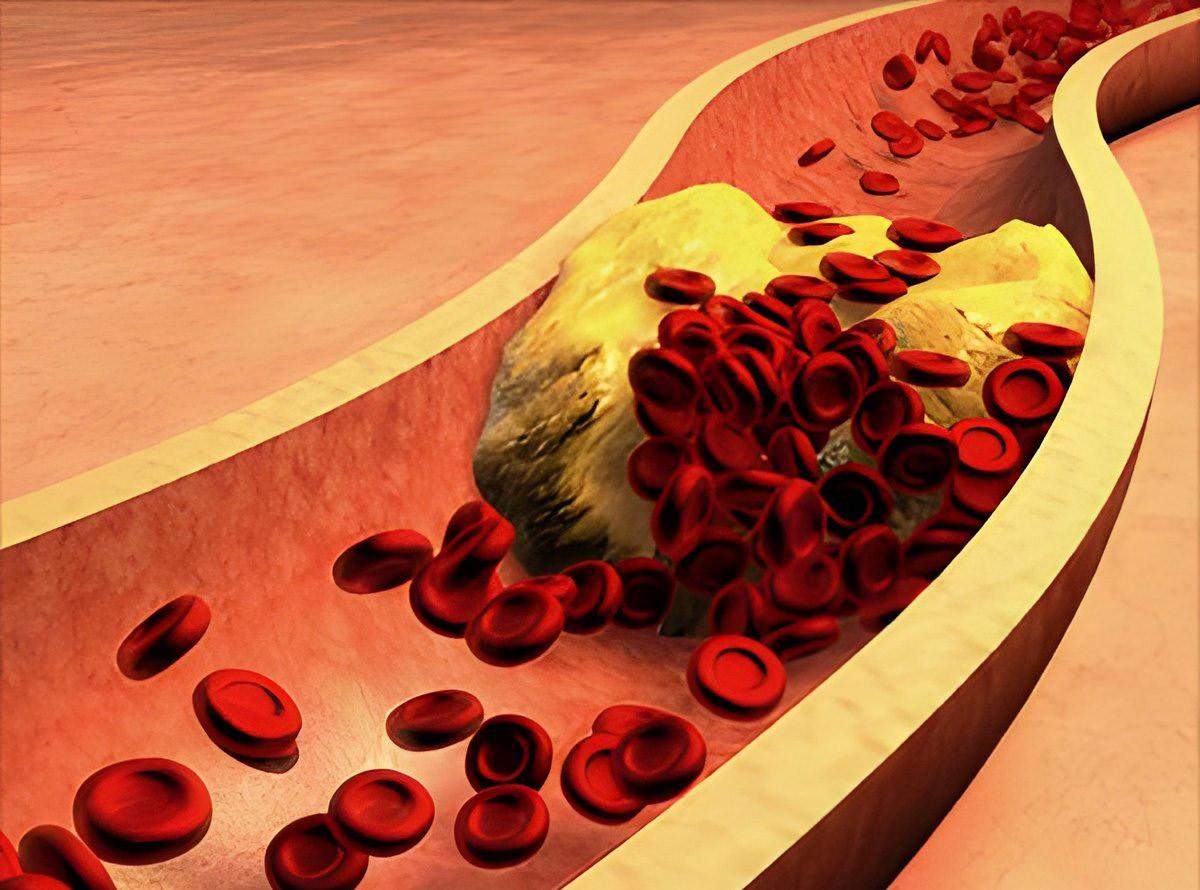
the young hearts in danger.
Dr Sandeep Banerjee, Pathologist, Apollo Diagnostic Mumbai advised the youth “to do the lipid profile test every 8-9 months as recommended by the doctor and adhere to a well-balanced lifestyle that includes eating a nutritious diet, exercising, and sleeping well”.
Meanwhile, the experts noted that microplastics in the bloodstream are also emerging as a hidden link to cardiovascular disorders.
Microplastics are tiny plastic particles less than five millimetres in size and are ubiquitously found in the environment and have infiltrated every part of human lives.
From oceans and soils to the food people eat and the water they drink, they have permeated the very core of the ecosystem.
Recent research reveals a concerning link between microplastics and human health, especially regarding their impact on the bloodstream, heart disease, and even neurological disorders.
“Once microplastics enter the bloodstream, they can trigger an immune response, leading to persistent inflammation. This chronic inflammation has the potential to disrupt normal bodily functions, and over time, is strongly associated with a range of serious health issues, including cardiovascular diseases and neurological disorders,” Dr. Praveen Gupta, Principal Director & Chief of Neurology, Fortis Hospital, said.
The long-term impact of microplastic exposure is becoming a critical concern for public health.
(IANS)
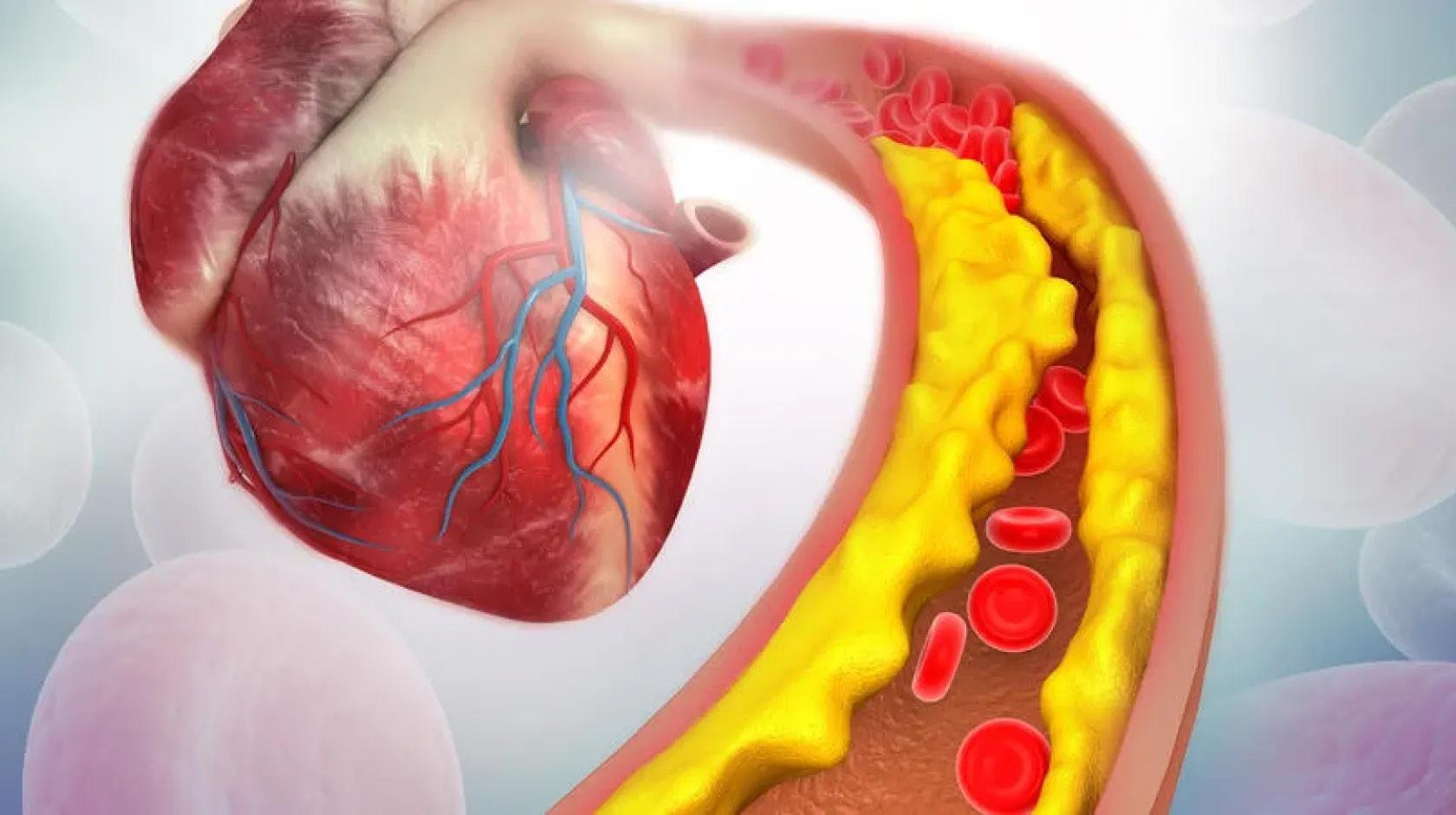

‘FASHION FOR ME IS EFFORTLESS, COMFORTABLE AND KEEPING IT REAL’, SAYS AISHWARYA RAI BACHCHAN
Eternal beauty Aishwarya Rai Bachchan made a splash on the global canvas when she was crowned as Miss World in 1994 and till date, she exudes royalty whenever she makes an appearance.
For the superstar, keeping it real, comfortable and effortless reigns supreme when it comes to fashion.
Talking about how she would define her fashion, Aishwarya, who made the world stand still during her walk at the iconic Paris Fashion Week, exclusively said, “Well… effortless, I would say that’s extremely important, I think, for it to be effortless, for it to be comfortable and keep real that’s what’s most important for me.”
For Aishwarya, who is not just a style icon but one of the most talented stars of Indian cinema, “Fashion is Art.”
Asked how time has played a role in her fashion sense, Aishwarya, who is the Global brand spokesperson for L’Oreal Paris, said, “I really look at it as art and I think it’s (an) art to be enjoyed and it can evoke all kinds of, you know, responses. And that’s what it should be… And it’s really all about designers. Most of the

people that I have worked with are friends, you know.”
Tagged as “one of the most beautiful women in the world”, Aishwarya lets fashion be the opportunity for the “designers to enjoy their creativity” but being “comfortable” is utmost important for her.
“There is sometimes a strong sense of me in my fashion, which the world can see… And then there’s sometimes where it’s a complete flight of their creativity. And I obviously go with the flow.”
On airport looks, she said, “Something as simple as going to the airport…When originally people were like… It’s always been about the comfort and the practicality of the moment,
the traffic, the kids, when the kid was small and at that point in time, people at the airport were going like it’s a runway. I mean, that’s something which I would never do.”
“And, you know, it was always about comfort and leisure. And I kind of, so that’s why obviously, that’s also the natural real moment. That’s the way I keep it, I keep it real,” said the mother of one.
The 50-year-old star has been associated with the beauty brand for more than two decades and described it as “warm, loving, wonderful and sync”.
She said that the motto of L’Oreal Paris, seems natural and real for her to be the voice sharing that sentiment because it was a natural fit for her.
She stressed that she appreciates the celebration of the empowerment of women and their strong belief.
The actress, who joins a league of global head turners such as Kylie Jenner and Eva Longoria, shared that it keeps the sense of “keeping it real”.
Actress Kareena Kapoor, best known for her outstanding performances in ‘Chameli’ and ‘Refugee’, once called out the Bollywood industry for its male dominance.
In a throwback video, when asked about her ideal role in the film, Bebo said, “Ideal role? Ideal role, actually I don’t have an ideal role. As long as the role is good, it’s okay, because this is a male-dominated industry like I did in my first film, it was a very good role, I’d like to get meaty roles like that I’d like to get meaty roles like that.”
Kareena made her power-packed debut in 2000 with Abhishek Bachchan, who also debuted in the same film alongside Jackie Shroff and Suniel Shetty. Later, Kareena was praised for her breathtaking role in the action-drama film that made her earn her Filmfare For Best Actor Female Debut.
She later featured in several films including, ‘Mujhe Kucch Kehna Hai’, ‘Yaadein’, ‘Asoka’,
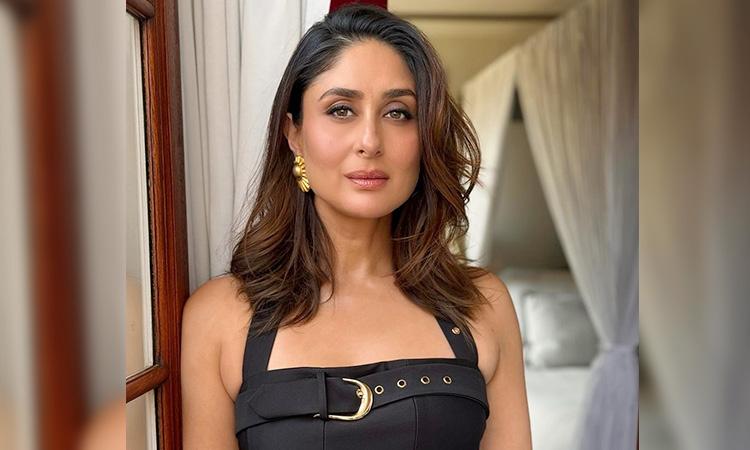
‘Kabhi Khushi Kabhie Gham...’, ‘Mujhse Dosti Karoge!’, ‘Jeena Sirf Merre Liye’, ‘Talaash: The Hunt Begins...’, ‘Khushi’, ‘Main Prem Ki Diwani Hoon’ and war-drama ‘L.O.C. Kargil’.
In 2004, she astonished everyone after featuring in Sudhir Mishra’s directorial ‘Chameli’. The film also featured Rahul Bose, Rinke Khanna, Shahil Raichand, Yashpal Sharma, Satyajit Sharma, Pankaj Jha, Kabir Sadanand, Makrand Deshpande, Tarun Shukla and Mahek Chahal in a special appearance role. The drama film made her earned special jury recognition at the 49th Filmfare Awards.
She also earned two Critics’ Awards for Best Actress for her 2004 film ‘Dev’ and her 2006 film ‘Omkara’. In the upcoming years, she received the Best Actress and Best Supporting Actress for Imtiaz Ali’s directorial ‘Jab We Met’ and 2010 film ‘We Are Family’ respectively.
On the personal front, on October 16, 2012, Kapoor married actor Saif Ali Khan in a private ceremony in Bandra, Mumbai. Later, she gave birth to their sons Taimur and Jehangir in 2016 and 2021 respectively. Kareena said that despite adding Khan to her name she would continue practicing Hinduism after marriage.
The ‘Bodyguard’ fame actress is all set to feature in the Ajay Devgn-starrer ‘Singham Again’ helmed by ‘All The Best’ fame director Rohit Shetty. The action-drama also features Akshay Kumar, Deepika Padukone, Ranveer Singh, Tiger Shroff, Arjun Kapoor, Jackie Shroff, Dayanand Shetty and Ashutosh Rana in crucial roles. (IANS)
Bollywood actress Ananya Panday has made shocking yet hilarious revelations about her relationship and said that she does not know why she gets cheated on so much.
In a video shared by streaming giant Netflix, Ananya, who reportedly parted ways with actor Aditya Roy Kapur in March, was speaking about how she got cheated on by an ex-boyfriend from her school days.
The actress said: So, in school my second boyfriend said he cheated on me. He went for a football camp or something and when he came back everyone was like ‘Oh, he kissed some chick’.”
The actress said that she confronted him and had a showdown in school.
“I was really upset and then I confronted him in school and full showdown, and I was like you suck and all of that stuff. Then we broke up.”
The shocking revelation came later in the form of a message on her phone.

“Then later in the day he BBM’d me and he was like ‘oh I didn’t actually cheat on you, but I wanted to break up with you, so I made up that fact that I cheated on you, and I am like what is worse? Both are bad.”
The 25-year-old actress said she doesn’t understand why she constantly gets cheated on.
“My cheating story... I mean cheating happened to me were very weird stories because the second time someone cheated on me… I don’t know why I get cheated on so much but when…”
Ananya was in conversation with comedian Raunaq Rajani, who said that probably her boyfriends would be scared of “Aakhri Pasta” –Ananya’s father Chunky Panday.
To which she said: “No, he is so harmless… he is always like Ya, I-am a joking.”
On the work front, Ananya will next be seen in the thriller “CTRL” directed by Vikramaditya Motwane. The film also stars Vihaan Samat. The film tells the tale of Nella and Joe, a perfect influencer couple. But when he cheats on her, she turns to an AI app to erase him from her life.”
Veteran Bollywood icon Amitabh Bachchan, who hosts the quiz-based reality show ‘Kaun Banega Crorepati 16’, has shared his story of struggle with regards to the content on OTT.
The senior actor said that there’s a lot of content on the medium to OTT to keep up with. He also said that films are largely meant to be seen on the big screen considering the hard work of a film’s crew.
The upcoming episode of the show features Kishor Aher from Bid, Maharashtra, who is a dedicated librarian preparing for a competitive exam. He shared his dream of establishing an educational institute in his village to honour his grandfather.
In a light-hearted exchange about watching movies on the big screen, Big B said, “It often happens that when I go to watch a film, I read the title beforehand, but if someone asks me a month later which movie I watched, I forget the name. I mention this because nowadays, there is an overwhelming abundance of films. Whether on mobile or in theatres, there are countless options everywhere”.
Kishor shared, “We usually watch movies on our mobile devices”, to which Amitabh
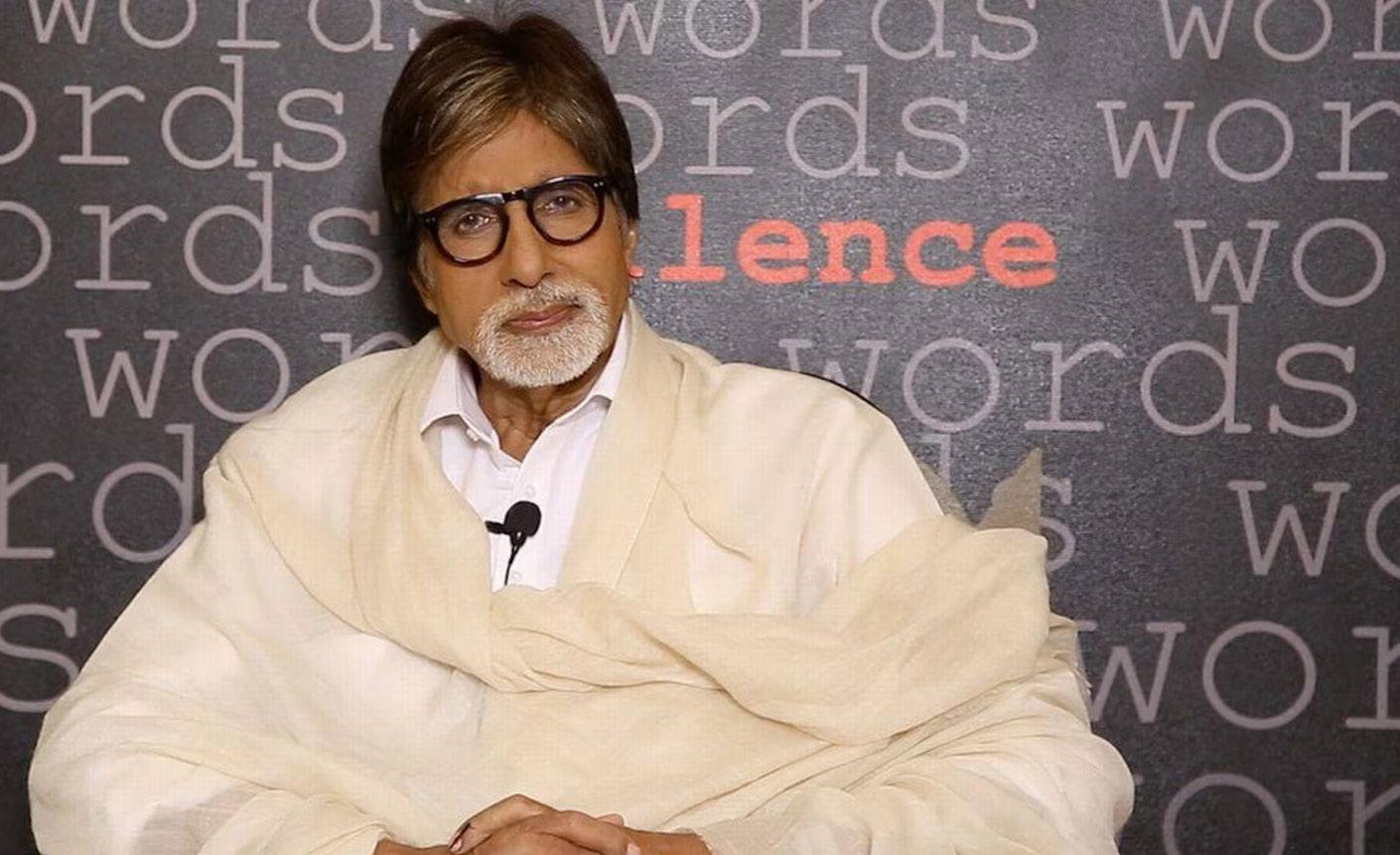
Bachchan replied, “I find it difficult to watch on such a small screen; it feels a bit strange. We’ve worked hard to enjoy films on the big screen, Hum bade parde ke liye bane hai, and there’s something truly special about watching a film in the theatres”.
He also recalled the recent re-release of the iconic film ‘Sholay’ by the Film Heritage Foundation. Big B said that the silver screen has its own charm.
Kishor then shared that his father is a huge fan of Sholay and would get CDs of the movie, watching it on repeat. And, at the special request of fans, Mr. Bachchan delighted everyone by reciting his famous line from the film, “Tumhara naam kya hai, Basanti?”
‘Kaun Banega Crorepati’ season 16 airs on Sony Entertainment Television. (IANS)
Tollywood superstar K. Chiranjeevi has entered the Guinness Book of World Records as the most prolific film star.
Chiranjeevi, often referred to as Megastar in film circles, received the certificate from a representative of the Guinness World Records at an event in the presence of Bollywood superstar Aamir Khan.
“Most prolific film star in Indian Film Industry/dancer is Konidela Chiranjeevi aka Mega Star (India) achieved on 20 September 2024,” reads the certificate issued by the Guinness World Records.
Chiranjeevi, who has performed 24,000 dance moves in 537 songs in his 156 films in his career spanning 45 years, recalled that he had an interest in dancing even before he started acting.
Chiranjeevi shared with the audience that he used to dance while hearing Telugu songs on Radio Ceylon.
“I never expected to get Guinness World Records. Dance has been part of my life all these years of my film career,” Chiranjeevi said, thanking directors, producers and fans for the honour.
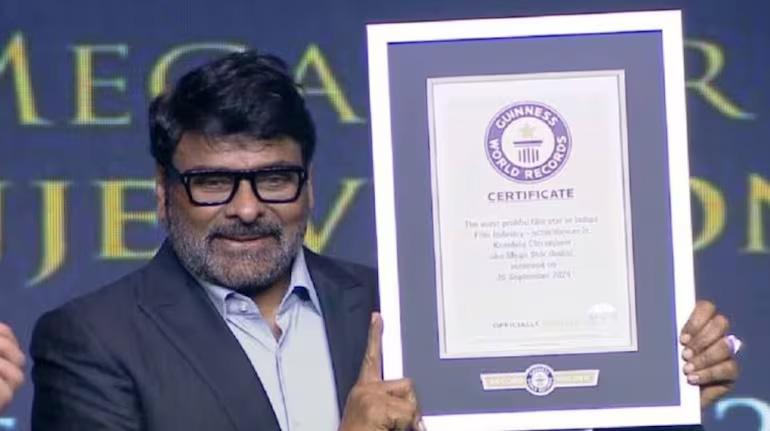
He mentioned how the filmmakers used to give priority to songs and many times the songs used to play a key role in the success of movies.
The megastar thanked Aamir Khan for accepting his invitation and said his presence made the moment special. He said he would never forget this gesture of Khan.
Superstar Aamir Khan said that he is a huge fan of Chiranjeevi. “I see him as my elder brother. When Chiranjeevi Garu called me and said he wanted to invite me to this event. I don’t know why he asks me. I told him previously many times that sir you have to only order. There is no asking. You have to just inform me,” he said.
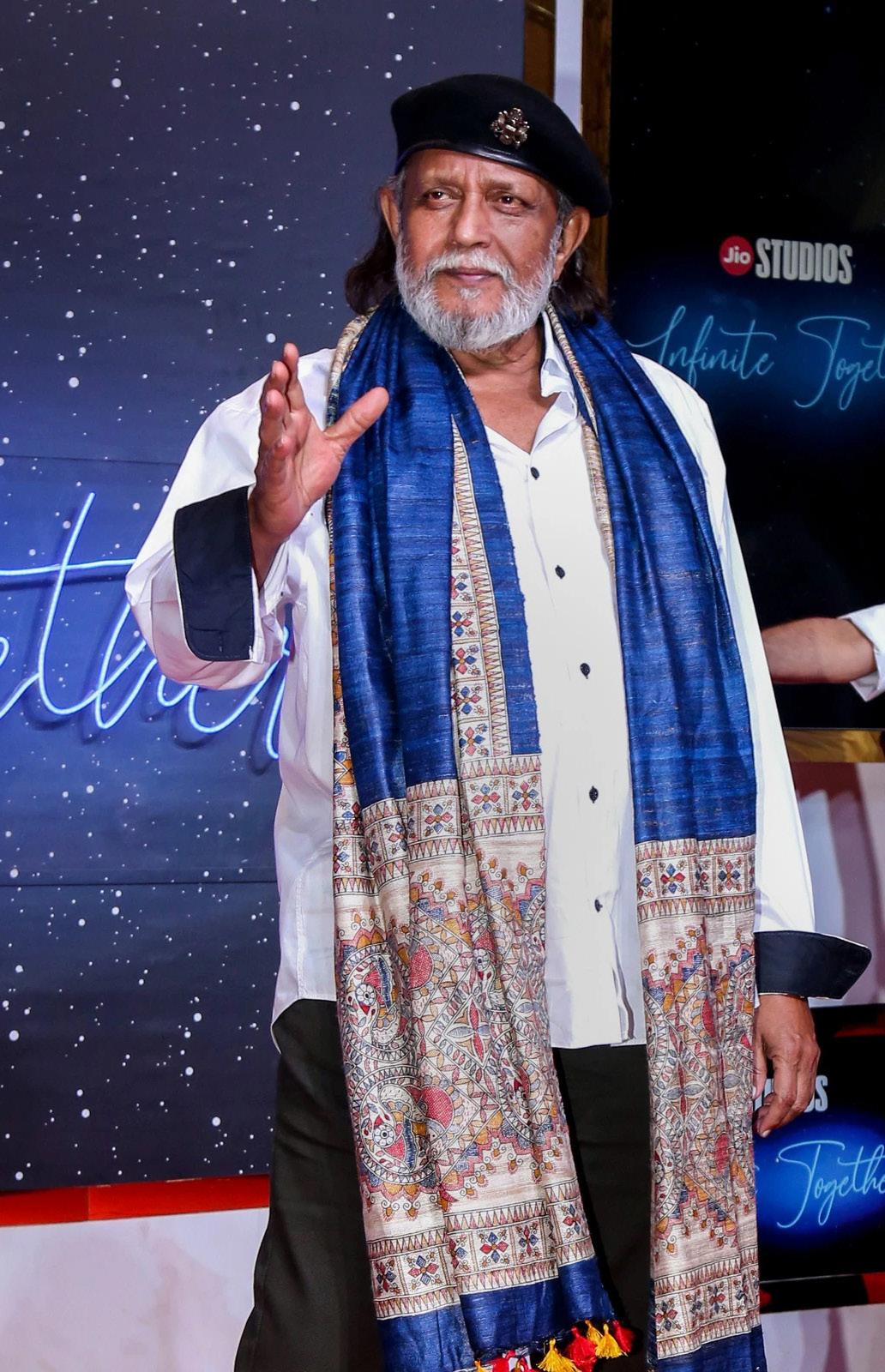
“I was so happy that Chiranjeevi Garu is being given this honour and I was really thrilled to know that. If you notice him in any song of his, his own heart is in it, and he is enjoying himself. Our eyes don’t move from him. He is having such a great time, and we are also infected with that. That’s such a unique quality,” Khan said.
Meanwhile, chief ministers of both Andhra Pradesh and Telangana have congratulated Chiranjeevi on receiving the honour.
Andhra Pradesh Chief Minister N. Chandrababu Naidu took to ‘X’ to congratulate the megastar. “He has made an unparalleled contribution to Telugu cinema with his grace and artistry. This recognition not only adds another feather to his cap, but it also elevates the pride of Telugu people all over the world,” posted Naidu.
Telangana Chief Minister A. Revanth Reddy also congratulated Chiranjeevi on receiving a Guinness World Records certificate and termed this a matter of pride for Telugu people’.
‘MY LIFE HAS NEVER BEEN VERY SMOOTH’: MITHUN CHAKRABORTY ON DADASAHEB PHALKE
Renowned Bollywood actor Mithun Chakraborty has reacted to receiving the prestigious Dadasaheb Phalke Award and shared insights about his early struggles.
Speaking to the media, the ‘Disco Dancer’ fame actor said, “Once, I was in Bombay. I didn’t have food; I slept in my car, and I was so scared. After such a big honor, I feel I have no one, and I can only say that I dedicate this award to my family and to the fans all over the world who bring joy to our country.”
“Almost 76 films later, you can say that my life has never been very smooth. I have had to fight for everything. But sometimes the result comes like this, and then you forget all this pain. God has given life,” Mithun concluded.
Veteran actress Jayaprada, who has featured in many films with the ‘Gunda’ fame actor, expressed her joy. She said, “It’s a moment of pride for all of us in the film fraternity because Mithun da is a ‘mahanayak’. He has worked in many films across several languages.”
“For me, it’s extremely special that he is receiving this honour because we are working together on two upcoming movies. We have completed ‘Rivaaz’ and the other film, ‘Fauji’, in which I’m sharing the screen with Dada and Prabhas,” she added.
Mithun Chakraborty is set to receive the Dadasaheb Phalke Award as its 54th honoree. This prestigious award was established in 1969 to honor the legacy of Dadasaheb Phalke, widely regarded as the father of Indian cinema. Notable previous recipients include legendary actors and actresses like Prithviraj Kapoor, Vinod Khanna, Raj Kapoor, Shashi Kapoor, Lata Mangeshkar, Asha Bhosle, BR Chopra, and Yash Chopra. Waheeda Rehman received the prestigious award in 2021.
On the work front, Mithun Chakraborty will next feature in the Prabhas-starrer ‘Fauji’, helmed by ‘Sita Ramam’ fame director Hanu Raghavapudi
Actress Shilpa Shetty has said that women are often associated with sacrifice instead they should be linked with strength and power.
Shilpa will be seen as a guest on the singing based reality show “Sa Re Ga Ma Pa”, which has Sachin-Jigar, Sachet Parampara and Guru Randhwa as the mentors, and Vipul Roy and Salman Ali as the hosts this time around.
Along with Shilpa, actors Rajkummar Rao and Tripti Dimri for the Navaratri special Grand Premiere episode. The top 12 contestants will be seen putting their best foot forward to wow the guests.
Contestant Riya Bhattacharya’s special gesture towards her mother moves Shilpa when she did her mother’s aarti to seek blessings before her performance.
Shilpa said, “Usually when we talk about women it is often associated with sacrifices, but I believe that- Ek Naari ko Himmat aur Taakat se associate karna

chahiye. Whatever you have done today, Riya is so proud of you (her mother). And honestly, I even feel very proud when I hear about such stories.”
The actress revealed that she even worships her mother.
“Whatever I am today, wherever I have reached in life, it is only because of her support, and that is why I understand this
emotion. A mother is always the strongest pillar in your life, a pillar that will always support you unconditionally. I am so happy to see this beautiful bond here today.”
“Sa Re Ga Ma Pa” airs on Zee TV.
Talking about Shilpa, the actress recently gave a glimpse of her perfect darbar for Goddess Durga on the occasion of Navratri.
The actress took to her Instagram and shared a reel of the decorations at her house in Mumbai. The actress also cooked delicious prasad as offering to the Goddess.
She wrote in the caption, “Jai Mata Di. May this Navratri bring strength, positivity and endless blessings to you and your loved ones. Love and light #HappyNavratri #JaiMataDi #Gratitude #Blessed #ShubhNavratri.
Bollywood actress Taapsee Pannu has decoded diva energy and said it is all about being bold and unapologetically yourself.
Taapsee took to Instagram, where she shared a picture of herself dressed in a white formal suit. To complete her look, she chose to go soft with her make-up and tied her beautiful curly hair into a ponytail.
“Diva energy: Bold moves, big dreams, and being unapologetically yourself,” she wrote as the caption.
Earlier this month, it was announced that the actress is joining hands with writer Kanika Dhillon once again for the action thriller christened “Gandhari”, which will be helmed by Devashish Makhija, who made “Joram”.
According to variety.com, the film has a riveting storyline filled with relentless determination and intense personal stakes, set against the backdrop of gripping mystery and high-powered action. Audiences will see Taapsee Pannu as a fierce mom on a mission,” reads the plot description from streaming giant Netflix.

After Anurag Kashyap’s “Manmarziyaan”, “Haseen Dillruba” and its sequel “Phir Aayi Hasseen Dillruba”, “Rashmi Rocket” and Rajkumar Hiranidirected hit “Dunki”, “Gandhari” marks the sixth instance of Taapsee and Dhillon’s partnership.
Taapsee was last seen in “Khel Khel Mein” starring Akshay Kumar, Vaani Kapoor, Ammy Virk and Fardeen Khan to name a few. The film was about a game night between couples, which goes wrong after they have to confess secrets in front of each other.
She was also seen in “Phir Aayi Hasseen Dillruba”, which is directed by Jayprad Desai. It also has actors Vikrant Massey and Sunny Kaushal. Taapsee and Vikrant reprise their characters of Rani and Rishu.
The movie follows Rani and Rishu’s character and how they once again overcome hurdles with a dollop of thrill.
The first part, which was titled as “Haseen Dillruba”, released in 2021. The romantic thriller was directed by Vinil Mathew and featured Taapsee, Vikrant and actor Harshvardhan Rane.
It traced the story of a woman suspected of killing her husband and narrates an interesting story about her marriage.
(IANS)
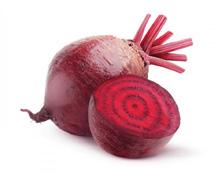
Beetroots are a great source of folate, the B-vitamin known for its role in preventing birth defects in foetuses
Have you ever tried something so good it feels like a gift from nature? Anjeer also known as dried figs aren’t just delicious, but they are like a powerhouse for your health.
According to Dr. Rohini Patil, MBBS & Nutritionist, who specialises in the field of diet and nutrition, with over 8 years of experience says, “Anjeer stands as a veritable punch of blessings, presenting a number of fitness advantages that embody digestion, coronary heart fitness, bone electricity, blood sugar management, weight control, and more. Its nutritional richness is attributed to a harmonious interplay of antioxidants, nutritional fiber, nutrients, and minerals, each contributing to the holistic proper-being of the frame. As you incorporate Anjeer into your weight-reduction plan, relishing its herbal sweetness and versatility, you are embracing a whole spectrum of blessings that nature has bestowed upon us. So, move in advance and take pleasure in the goodness of Anjeer-it is a flavorful adventure toward the finest fitness and vitality.”
Let’s look at what Anjeer has to offer in terms of health benefits:
Makes your digestion easier: One of the unique properties of figs is their essential dietary fibre content. Fibre is key to regular bowel movements, prevents constipation, and helps promote healthy digestion by maintaining gut health. The soluble fiber in grapes binds to waste products and helps to pass well through the intestine. This quality can be attributed to the large amount of leaves present in it, which helps to make it easier to absorb the blisters.
Acts as an antioxidant: Fig is a powerful antioxidant that works tirelessly to combat oxidative stress and neutralise harmful free radicals in the body. These antioxidants include polyphenols such as quercetin, catechins, and anthocyanins, which have reduced the risk of chronic diseases such as heart disease and certain cancers These compounds not only protect cells from destruction but also contribute to the generation of all energy.
Protects your heart health: The heart health benefits of figs are further enhanced by an amazing variety of heartfriendly nutrients. Plenty of potassium, an electrolyte needed to maintain normal blood pressure. In addition, the presence
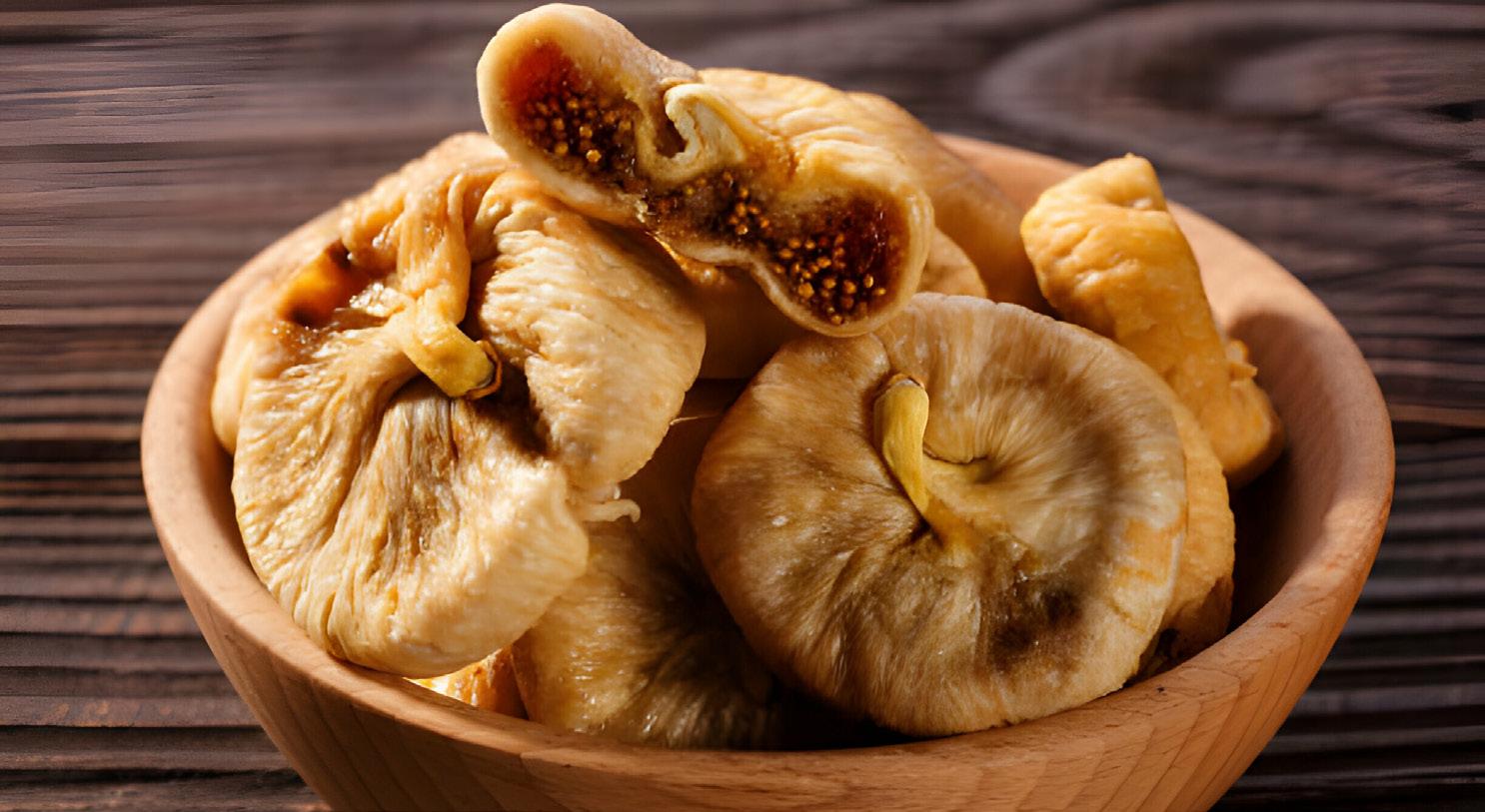
of magnesium and dietary fiber supports cardiovascular wellness by increasing the health of blood vessels and helping to regulate blood pressure.
Improves bone fitness and balances minerals: Anjeer performs a vital position in supporting skeletal electricity and bone fitness. This is attributed to the presence of calcium, phosphorus, and magnesiumminerals that are critical to bone formation and preservation. These minerals paintings synergistically decorate bone density and mitigate the hazard of bone-related issues, together with osteoporosis.
Manages blood sugar degrees: Despite their candy taste, Anjeer has a notably low glycemic index, making them appropriate for individuals looking to manage their blood sugar tiers. The presence of nutritional fiber helps sluggish down the absorption of sugars, stopping fast spikes and crashes in blood sugar. This element is particularly treasured for people with diabetes or those aiming to control their sugar consumption.
Weight Management: Figs can be a valuable ally for those looking to maintain a healthy weight. The dietary fiber in them helps to feel full, prevents excessive

hunger, and prevents overeating. Plus, they are naturally low in calories, making them a satisfying yet guilt-free snack.
Boost skin health: The benefits of figs extend to skin health, thanks to their many nutrients. The presence of vitamins A and E along with antioxidants fights oxidative stress, supports collagen production, reduces the appearance of fine lines and wrinkles, and promotes healthy skin. The active compounds in figs work perfectly to enhance the skin’s natural glow.
Acts as a natural bronchodilator: Figs contain many compounds with bronchodilator properties, which can be beneficial for respiratory problems Along with quercetin and beta-carotene these compounds are associated with improved lung function, they provide relief for conditions like asthma.
Boost the immune system: The nutrients in figs help to strengthen the immune system. Vitamins such as vitamin C and minerals such as zinc play an important role in strengthening the immune system, protecting the body from infection, and helping healing. The combination of these nutrients sets strengthen the body’s defence system.
Source of Essential Micronutrients: Beyond its spotlight nutrients, Anjeer includes a range of essential vitamins and minerals that assist normal fitness. These include vitamin K, which is essential for blood clotting and bone fitness, in addition to B nutrients like B6 and folate, which are worried about electricity metabolism and cell features. (IANSlife)
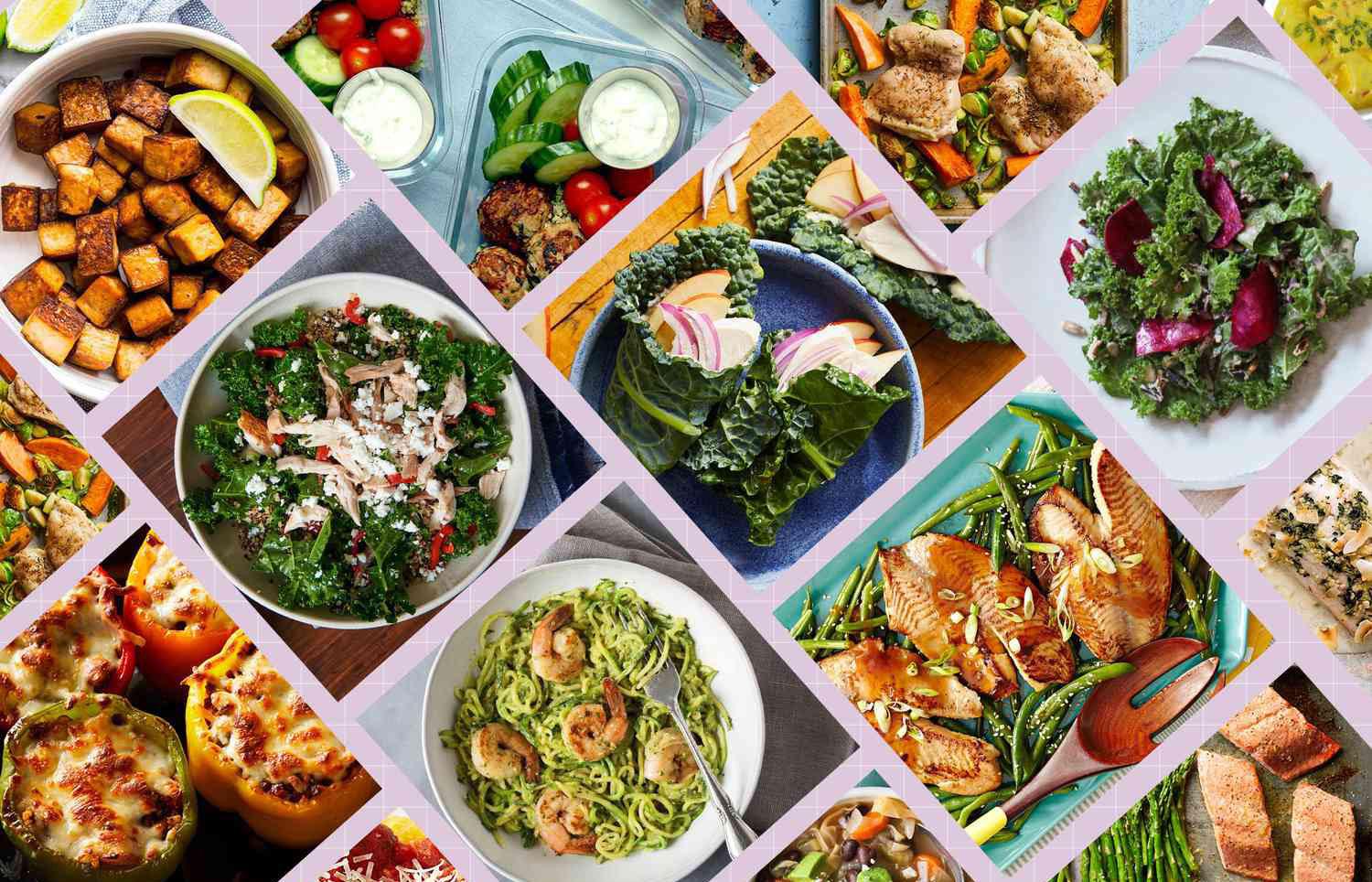
In the dynamic world of culinary arts, crafting a menu is not just about listing dishes; it’s a delicate art that involves a chef’s meticulous planning and strategic thinking. Here, we delve into the essential elements that make up the art of menu planning explained by Chef Vishwanath Narake:
Understanding the Business Landscape:
A chef’s first canvas is the food cost and the budgetary goals of the food service operation. This involves a careful balance between offering quality ingredients and maintaining profitability. Production capability is the next stroke, considering available equipment and personnel, and ensuring that the menu aligns with the kitchen’s capacity.
Tailoring to Service Dynamics:
The type of service and food delivery system play a crucial role. A fine-dining establishment may demand a different approach than a fastcasual setup. This consideration ensures that the menu not only complements the dining experience but also aligns with operational efficiency.
Harmony in Ingredients’ Availability:
A chef’s symphony is incomplete without considering the availability of ingredients. Seasonal produce not only adds freshness but also helps in managing costs. A thoughtful approach to ingredient sourcing ensures a
harmonious and sustainable menu.
Philosophy as the Guiding Star:
The philosophy of the business and the foodservice operation serves as the North Star. Whether it’s a commitment to local and organic produce or a dedication to global culinary fusion, the menu should reflect and enhance the overall ethos of the establishment.
Pricing as a Fine-Tuned Note:
Right pricing is a key element, balancing the perceived value of the dish with the cost of production. A strategic pricing model not only attracts customers but also sustains the financial health of the business.
Material Selection:
Choosing the right material for the menu is akin to selecting the perfect backdrop for a painting. The menu should be reflective of the ambiance and style of the establishment, creating an immersive dining experience for the patrons.
Logical Design for Seamless Experience:
Designing the menu logically is about creating a flow that guides the diners through a seamless culinary journey. Grouping dishes logically, whether by course or flavor profiles, assists patrons in navigating the offerings effortlessly. Words that Tantalize:
Keep the words appealing, as they serve as the brushstrokes that paint a vivid picture of the dish. Descriptive language not only entices the palate but also provides an insight into the culinary craftsmanship behind each creation.
Showcasing Signature Dishes:
Promote your signature dishes as the pièce de résistance. These are the star performers that define the chef’s artistry and distinguish the establishment. Strategically placing them on the menu ensures they receive the attention they deserve.
Feedback: The Ongoing Dialogue:
Collecting customer feedback is akin to an artist seeking critique. It provides valuable insights into what works and what can be refined. Customer opinions guide continuous improvement, ensuring the menu evolves with the dynamic tastes and preferences of the clientele.
In conclusion, menu planning is not a static process but an evolving masterpiece. A chef’s perspective incorporates a careful blend of financial acumen, culinary creativity, and an unwavering commitment to customer satisfaction. The art lies in achieving a harmonious balance that tantalizes taste buds, captivates hearts, and sustains a thriving culinary legacy.


BY DEEVYA GUPTA

Diwali is here, and with it comes the temptation of irresistible sweets and snacks! But fear not, dear foodies. This festive season, indulge in your favourite treats without compromising your health goals. With a few simple tweaks, you can have your laddoos and barfis, and still rock that healthy lifestyle.
Mindful Eating: The Key to Guilt-Free Indulgence
Practice mindful eating by engaging your senses: smell, touch, and visualise the treat before devouring it. Savour each bite, and you'll find one piece satisfies your cravings just as much as many.
Smart Tips for Sweet Lovers
1. Take small bites, eat slowly.
2. Limit yourself to one piece per serving.
3. Eat sweets after meals to avoid overindulging.
4. Share with loved ones or freeze for later.
5. Reduce sugar content when making your own sweets.
Dining Out? No Problem!
1. Eat slowly, feel fuller.
2. Use smaller plates to visually reduce intake.
3. Load up on veggies (sabji, salads).
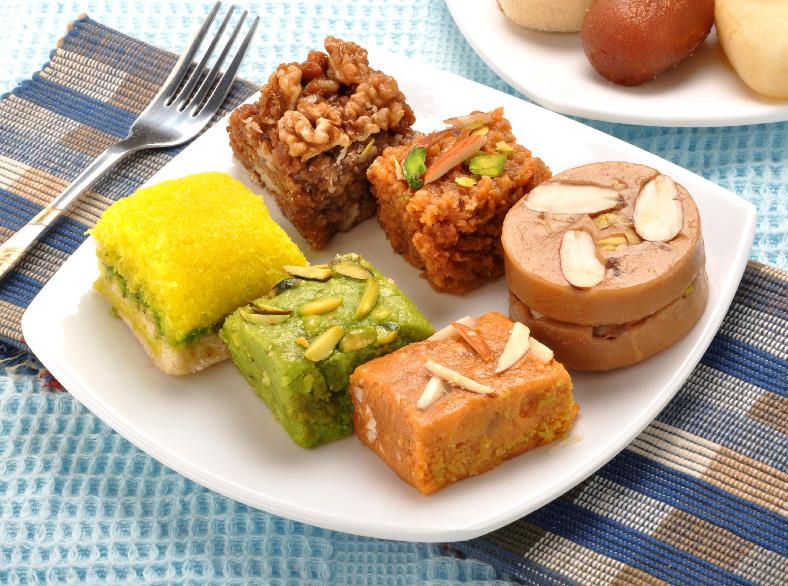
4. Plan ahead: balance with lighter meals.
Stay Active, Stay Hydrated
1. Maintain your exercise routine.
2. Incorporate small physical activities (parking further away, taking stairs).
3. Drink plenty of water to avoid confusing hunger with thirst.
The Most Important Tip: Enjoy with Loved Ones!
This Diwali, focus on sharing laughter and

love with family and friends, not just sweets. By following these expert tips, you'll navigate the festive season with confidence and a healthy smile.
Happy Diwali from Deevya Gupta, Accredited Practicing Dietitian! Share your favourite Diwali treats and healthy tips with us!
Please note this advice is of a general nature. If you have any concerns or queries you should get tailored advice from an Accredited Practicing Dietitian and always consult with your General Practitioner before making any changes. Feel free to contact us if you require any specific Dietitian advice. Our dietitians specialise in all diets and specifically Indian diets.

or
2 cups soya nuggets
3-4 tbsp olive oil
1 tsp cumin seeds
2 large onions, chopped
1 tbsp ginger paste
1 tbsp garlic paste
2-3 med tomatoes, chopped
1 tsp turmeric powder
1 tsp chilli powder
1 tsp garam masala
salt to taste
1/2 cup frozen peas, defrosted
1 small red capsicum, diced
Soak Soya nuggets in hot water for 5 minutes.
Drain and squeeze out excess liquid.
Heat oil in non stick pan, fry cumin seeds and onions.
Sauté till light brown.
Stir in the ginger and garlic paste. Add chopped tomatoes, turmeric powder, chilli, salt and garam masala. When the oil separates, add the soya nuggets and half a cup of water. Cook for 10 mins.
Allow the mixture to boil. Add the peas and capsicum, mix well and cook for a few mins.
are by
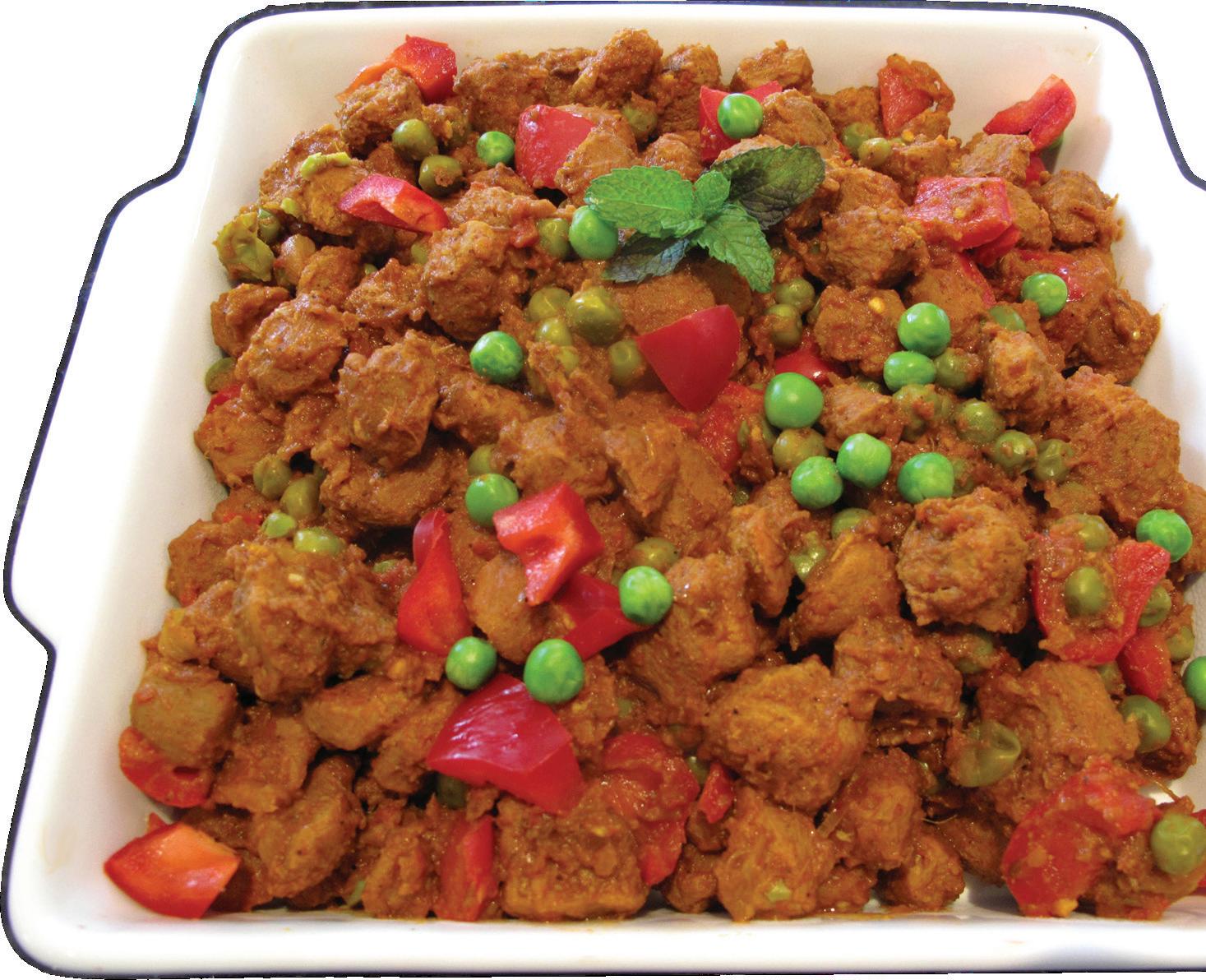
GARNISH: Fresh coriander leaves




Mesha (Aries)

Your efforts would be resisted quite firmly and you might find yourself in the middle of an extremely messy situation. Curb such tendencies, failing which you would have only yourself to blame. Not a good time for investment, or for new ventures. Any such plans should therefore, be shelved for the moment.
Best days: 3, 12, 30
Lucky Colour: Red, Orange, Cream
Simha (Leo)

Your financial prospects appear to be quite bright. Musicians, dancers, painters, and other practitioners of the arts can look forward to an extremely satisfying and productive spell during this coming month. They would not only benefit financially but also have cause for satisfaction at their creative output.
Best days: 5,3
Lucky Colour: White & Orange
Dhanu (Sagittarius)
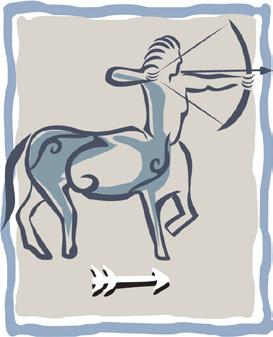
This month there would be ample opportunity for you to advance your career prospects, since the stars are in an obliging mood. Despite a lot of hard-work, the effort would not seem to be a burden because the rewards would be more than commensurate.
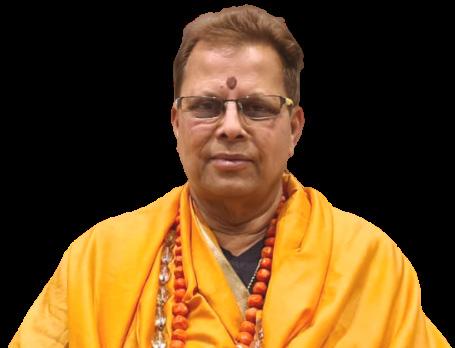
Vrishabh (Taurus)

Nothing very encouraging in this month, in so far as your financial prospects are concerned. Any litigation or dispute is almost certainly going to be decided against you this month. The best you can hope to do is to try and see that the decision on any such matter is postponed to a later and more favourable period.
Best days: 9, 18, 27
Lucky Colour: Green, Blue
Kanya (Virgo)

The bleak scenario may make some of you somewhat more inclined to take risks of a pointless sort. This could also result in losses. Curb such tendencies. And finally, the climate would be far from congenial for any investment or new enterprises. Any such plans should be shelved for the moment.
By D. Narayan (Tantracharya)

Your efforts would meet stiff resistance and an extremely unpleasant situation could come about, curb such tendencies very firmly, failing which you would only have yourself to blame. The climate would also not be congenial for investment or launching any new ventures. Any such plans should, therefore, be shelved for the time being.
Best days: 2, 7, 9
Lucky Colour: Red, White, Yellow
Tula (Libra)

You may be met by stiff resistance and could easily turn into an extremely unpleasant situation from which it would not be easy to extricate yourself. Curb such tendencies very firmly, failing which you would have only yourself to blame. Not a good time for investment and new ventures.
Karkat (Cancer)

You might have a streak of meanness that would goad you on to severely exploit your juniors and subordinate This would be met by stiff opposition from them and could create an extremely unpleasant situation for you. Try not to let such a situation come about. Curb this streak, and behave well with your juniors.
Best days: 9, 18
Lucky Colour: Red, Blue
Vrishchik (Scorpio)

The time is quite favourable so far as your financial prospects are concerned. Most of you would have a way of handling your juniors or workers in a manner that will enable you to derive the optimum benefit from their services. This could be an important gain from which you would profit a great deal.
Best days: 3, 12
Lucky Colour: Orange, Green
Makara (Capricorn)

A gainful month, in so far as your financial prospects are concerned. Many of you can look forward to reaping a rich harvest of sudden gains. Speculation would also benefit quite a few among you. There is also a good chance of a favour being done to done to you by some old gentleman.
Best days: 9, 18
Lucky Colour: Red, Blue
Kumbha (Aquarius)

This month a favourable set of circumstances would promote your good health leaving you no cause for any serious worry. Any predisposition to chronic colds and discharge of excess of mucous, etc would be significantly relieved.
Best days: 1, 3, 4
Lucky Colour: Red, Orange
Meen (Pisces)

There is the likelihood of your relations with your superiors deteriorating to such an extent that losses become a distinct possibility. Take remedial action well in time and prevent such an eventuality. The climate would be none too favourable for making investments or for launching new projects.
Best days: 9, 18
Lucky Colour: Red, Blue
Best days: 1, 3, 4
Lucky Colour: White, Green, Blue
Lucky Colour: White, Green, Blue Lucky Numbers - 5, 3, 6
Best days: 2, 7, 9
Lucky Colour: Red, Yellow, White

Why do peanuts float in a regular coke & sink in a diet coke? Go ahead & try it!
I used to eat a lot of natural foods until I learned that most people die of natural causes.
Can you cry under water?
How important does a person have to be before they are considered assassinated instead of just murdered?
Once you're in heaven, do you get stuck wearing the clothes you were buried in for eternity?
What disease did cured ham actually have?
How is it that we put man on the moon before we figured out it would be a good idea to put wheels on luggage?
Why is it that people say they "slept like a baby" when babies wake up like every two hours?
If a deaf person has to go to court, is it still called a hearing?
Why are you IN a movie, but you’re ON TV?
Why do people pay to go up tall buildings & then put money in binoculars to look at things on the ground?
Why do doctors leave the room while you change? They're going to see you naked anyway.
Why do toasters always have a setting that burns the toast to a horrible crisp, which no decent human being would eat?
If the professor on Gilligan's Island can make a radio out of a coconut, why can’t he fix a hole in a boat?
If corn oil is made from corn, & vegetable oil is made from vegetables, what is baby oil made from?
If electricity comes from electrons, does morality come from morons?
Did you ever notice that when you blow in a dog's face, he gets mad at you, but when you take him for a car ride, he sticks his head out the window?




Chennai: Indian Air Force Day Celebrations at the Air Force Station
